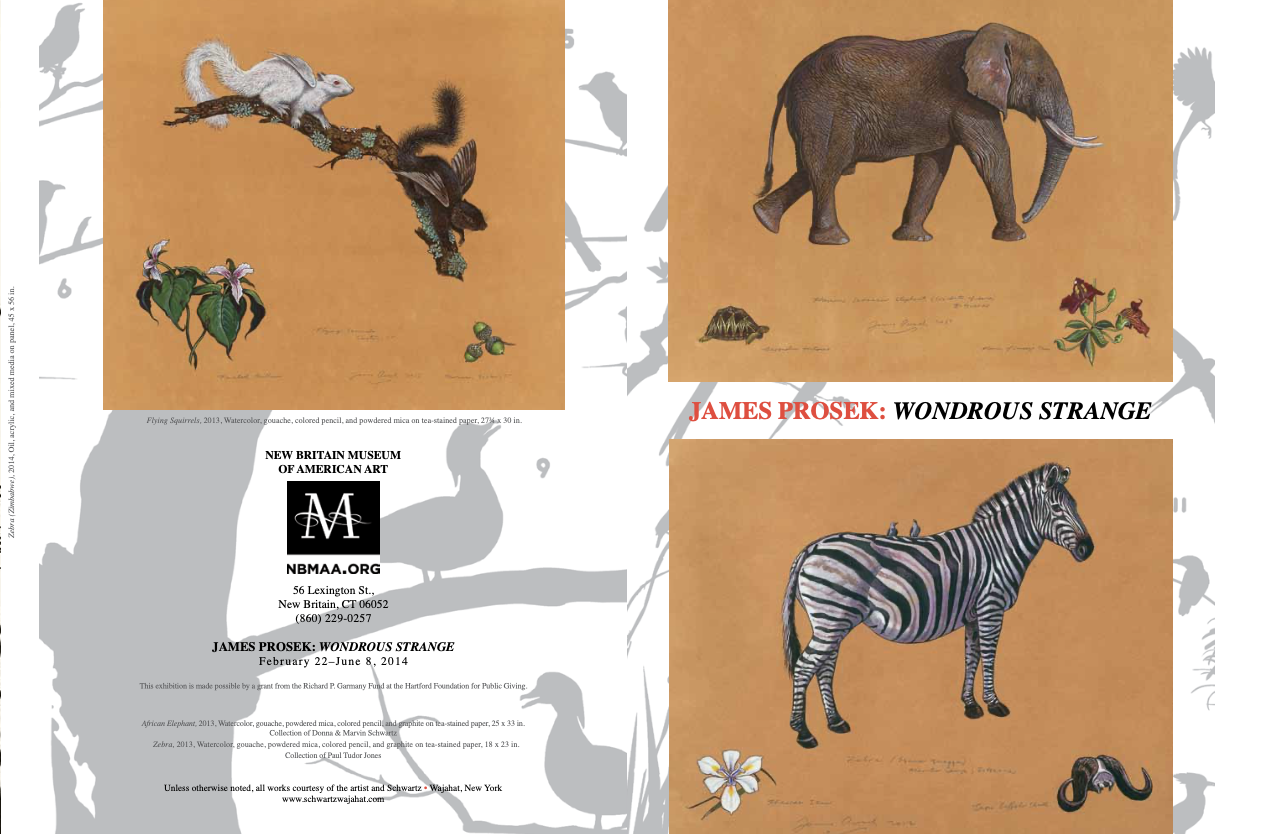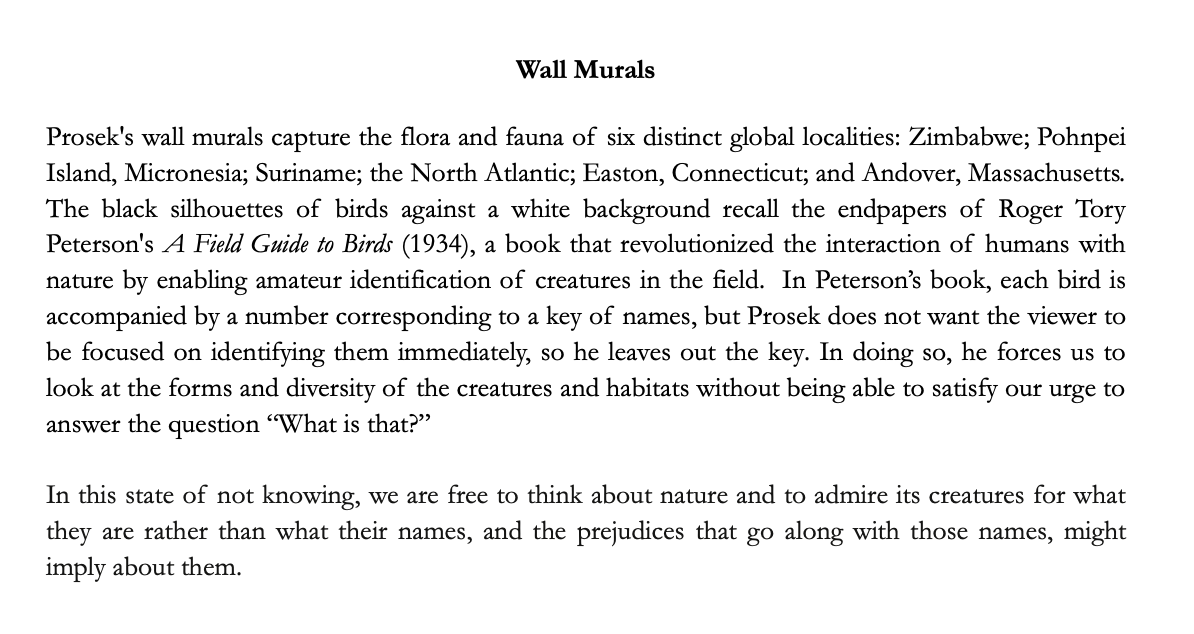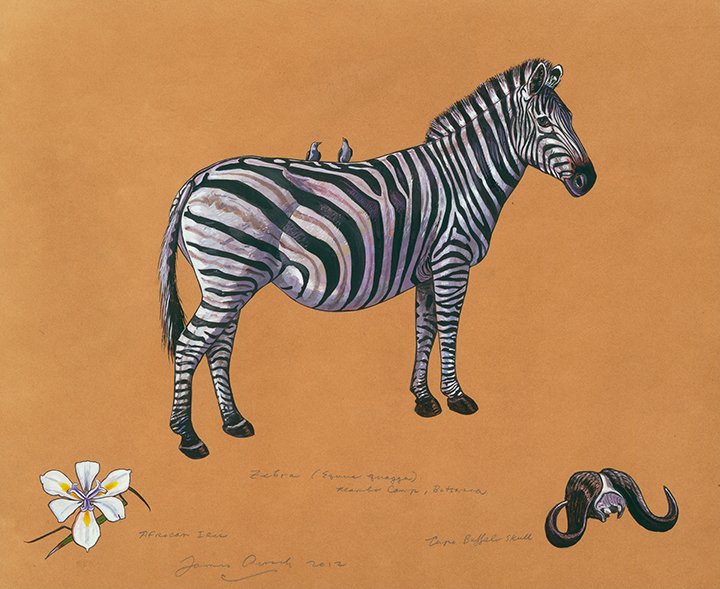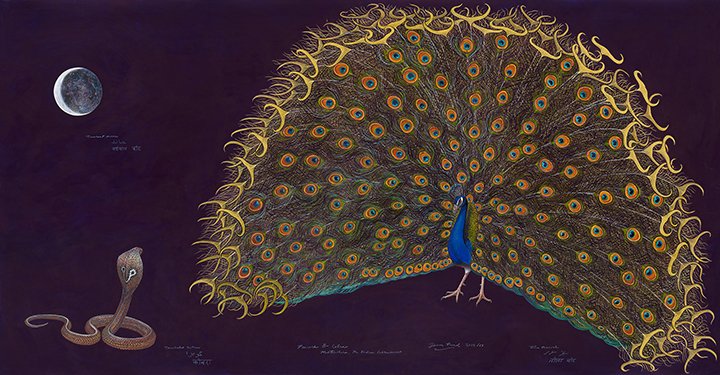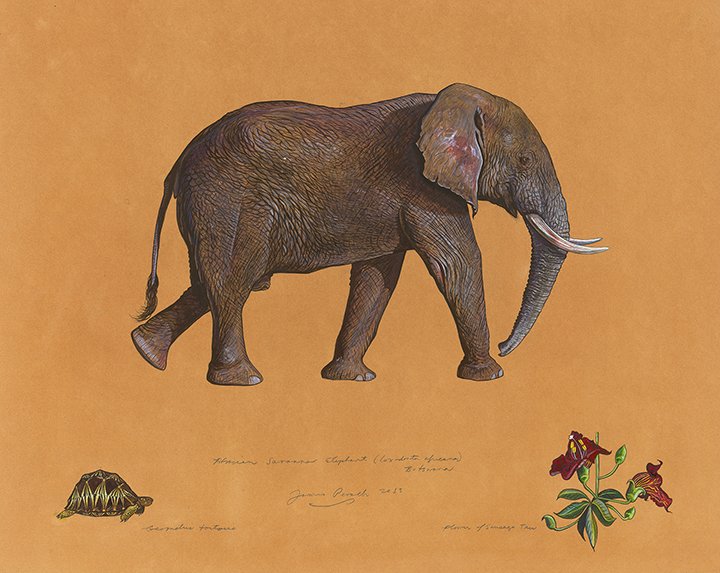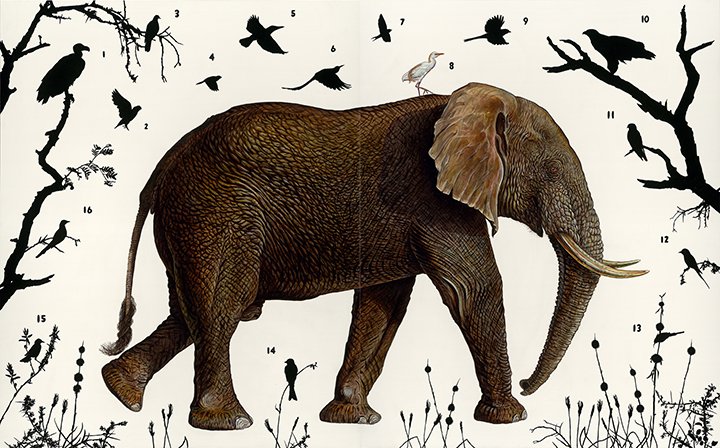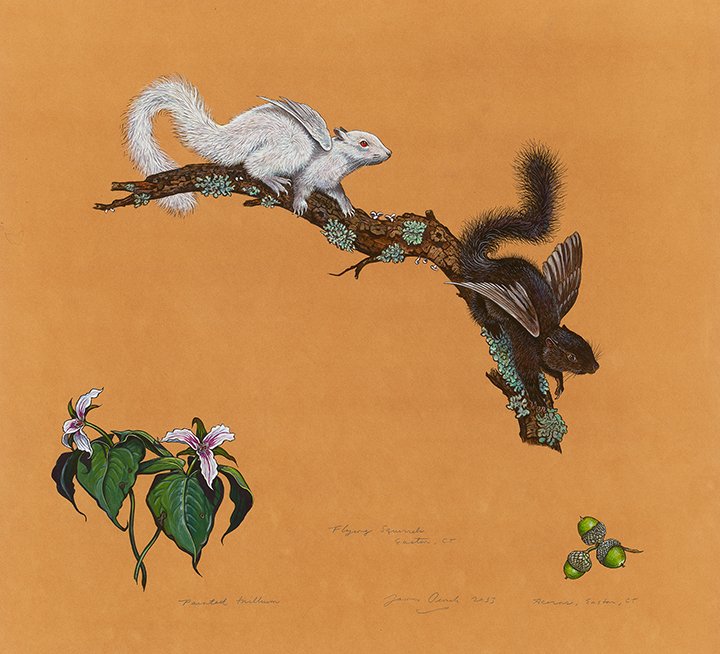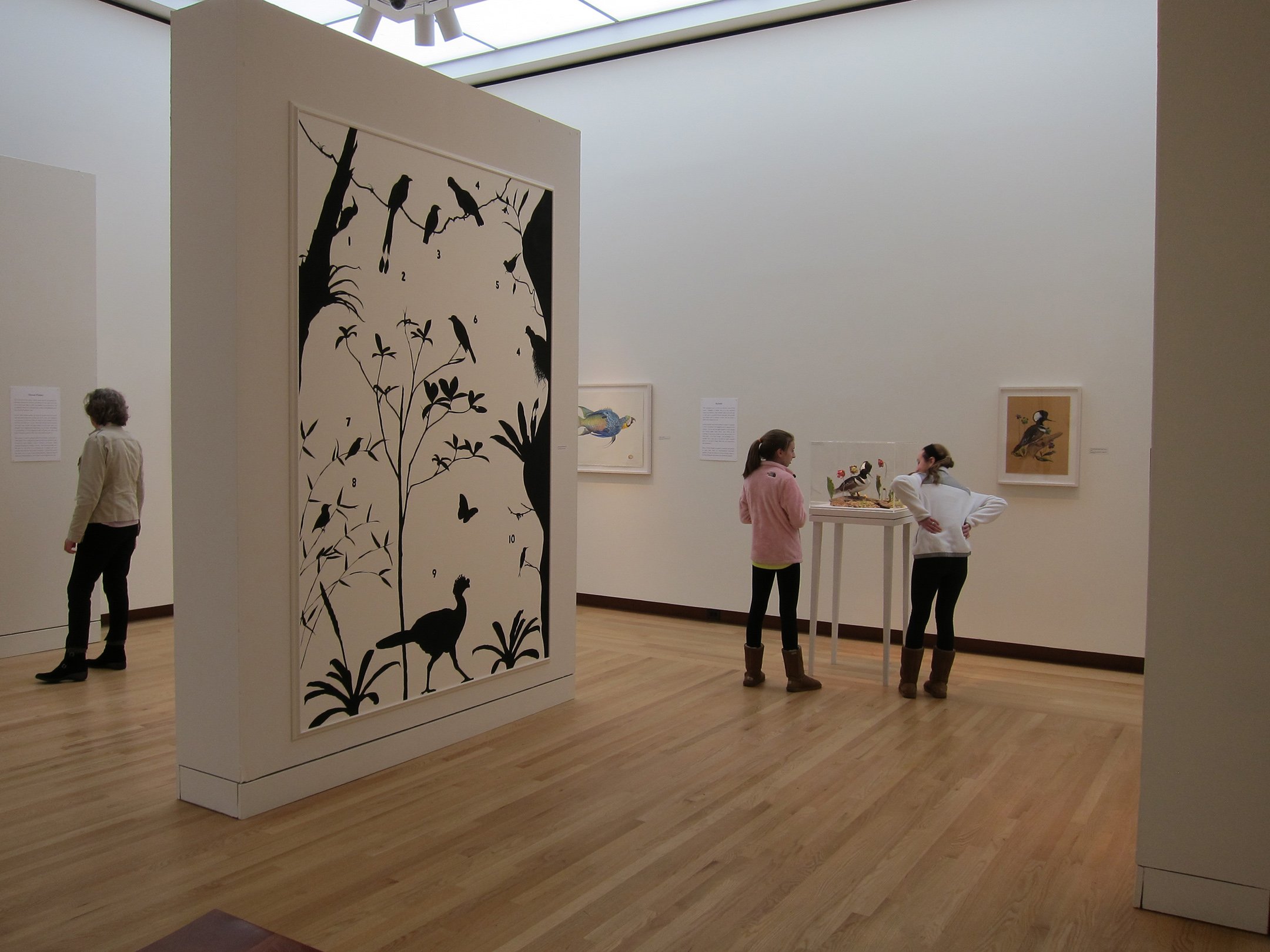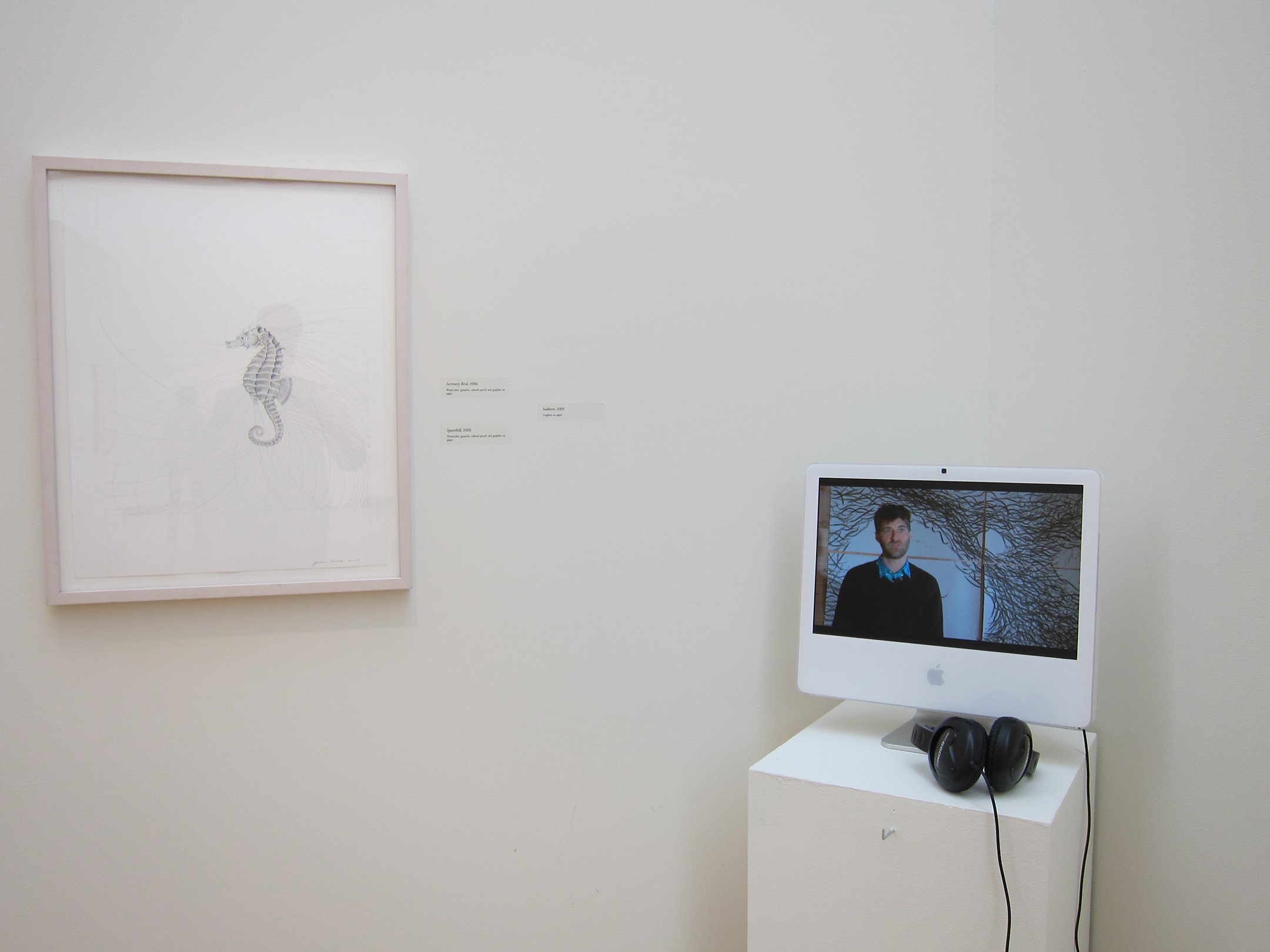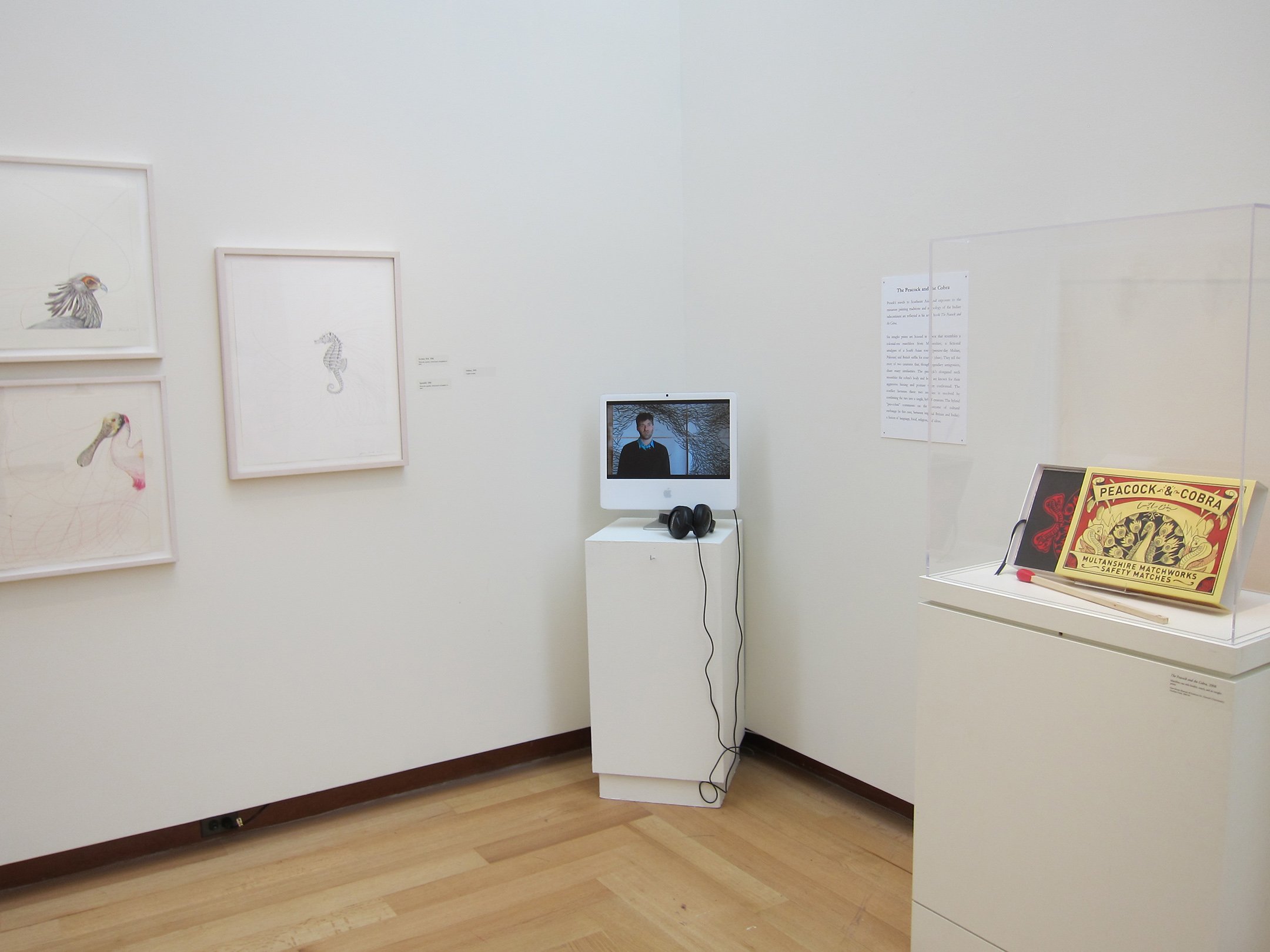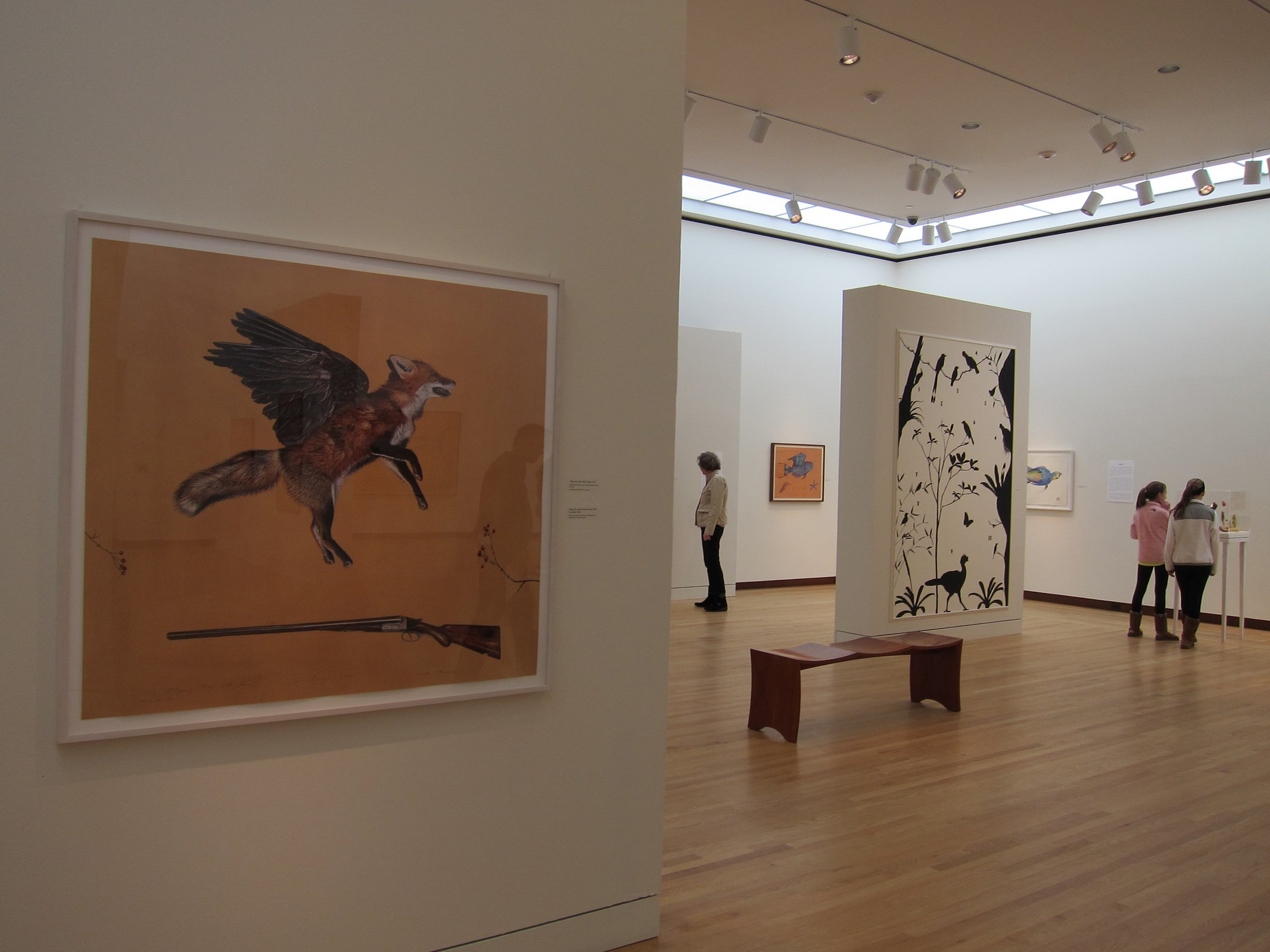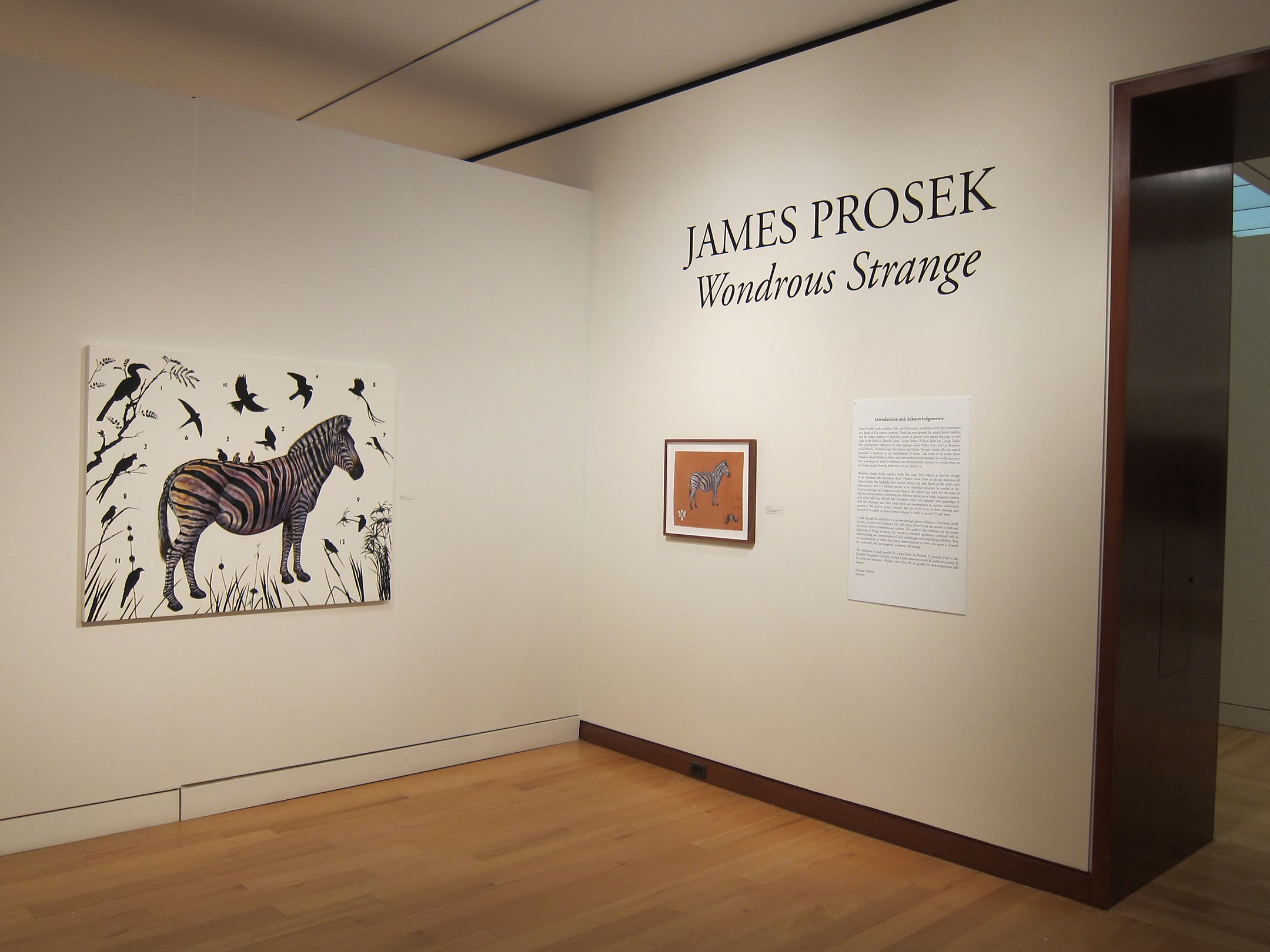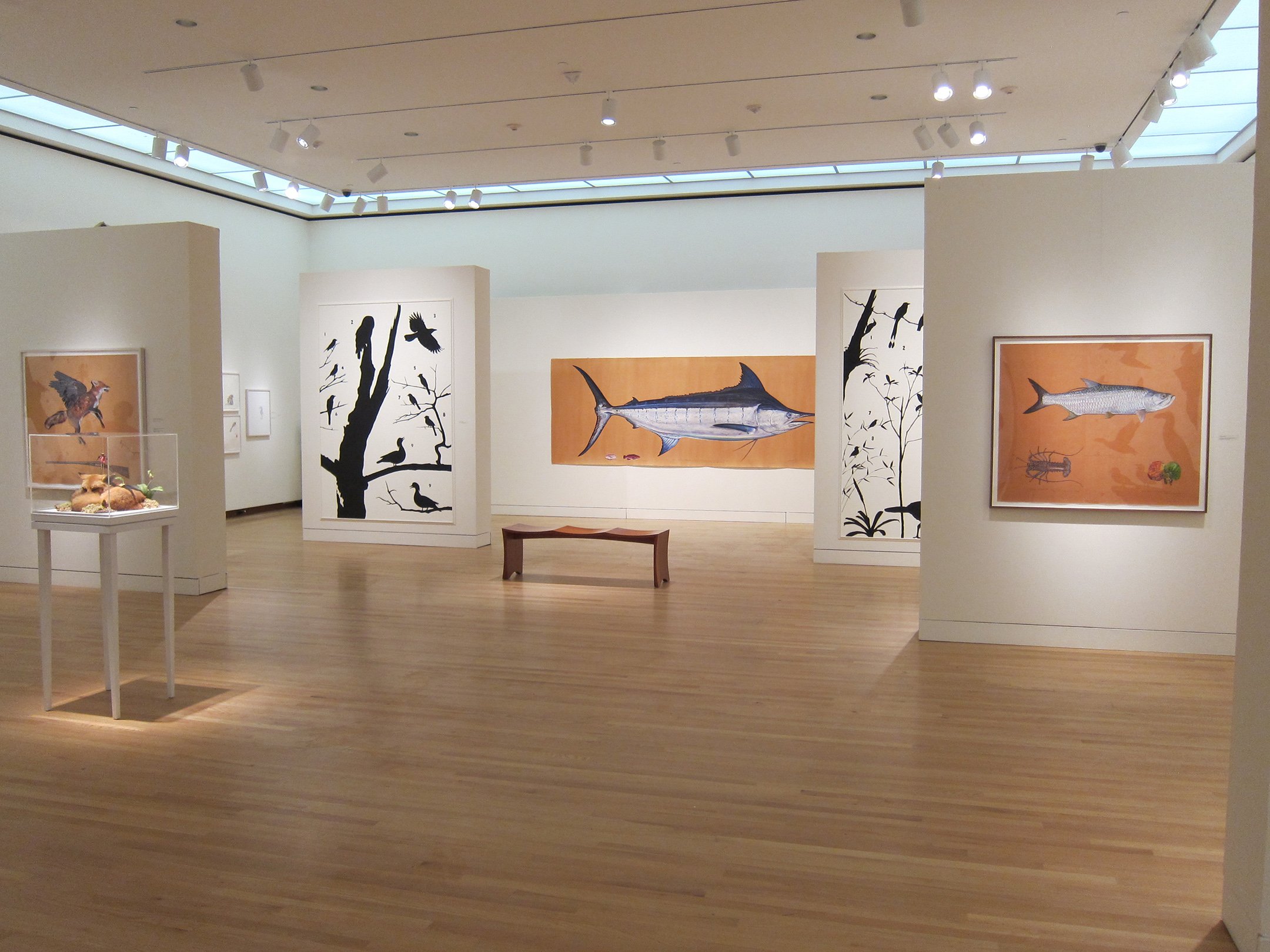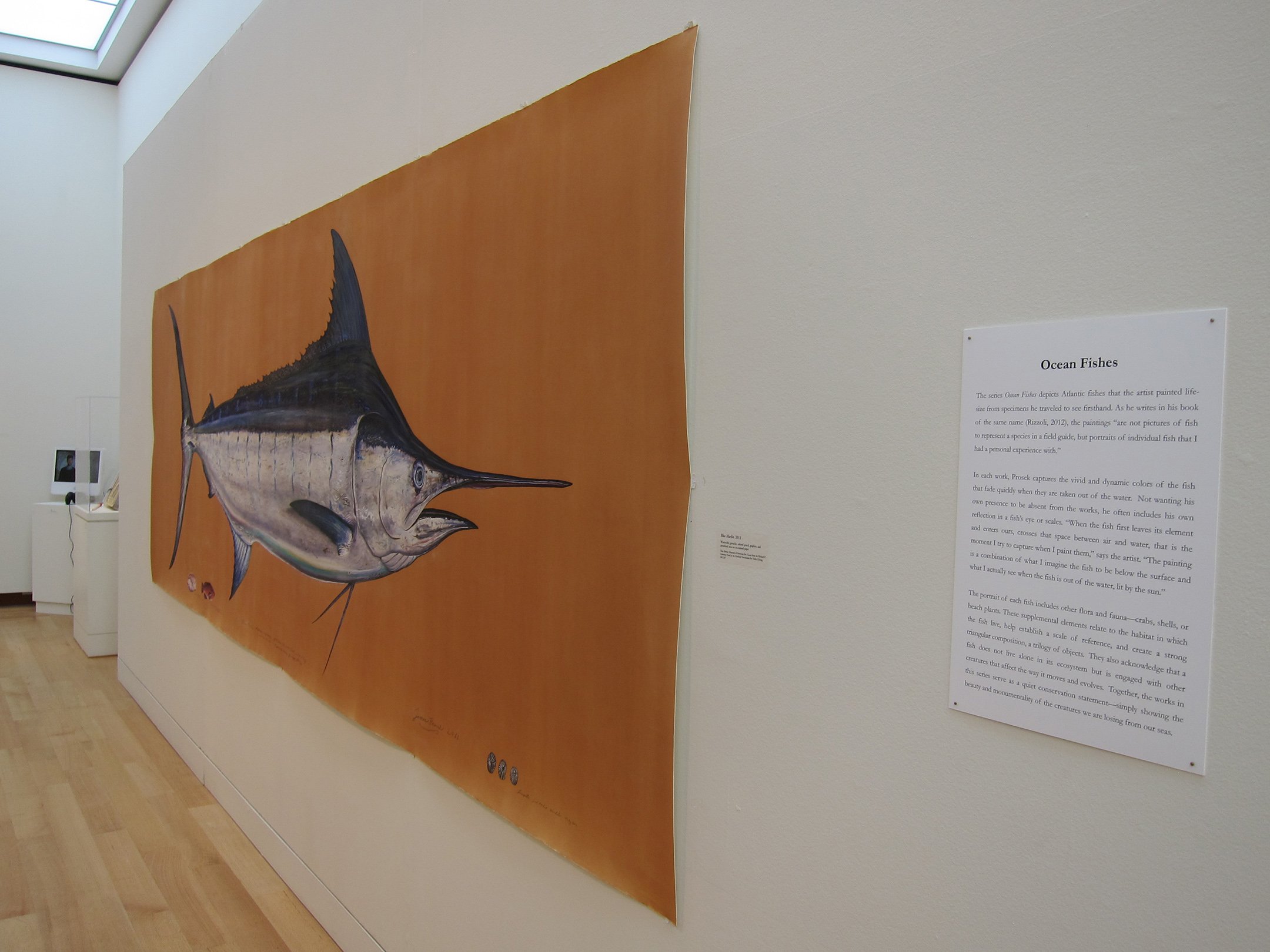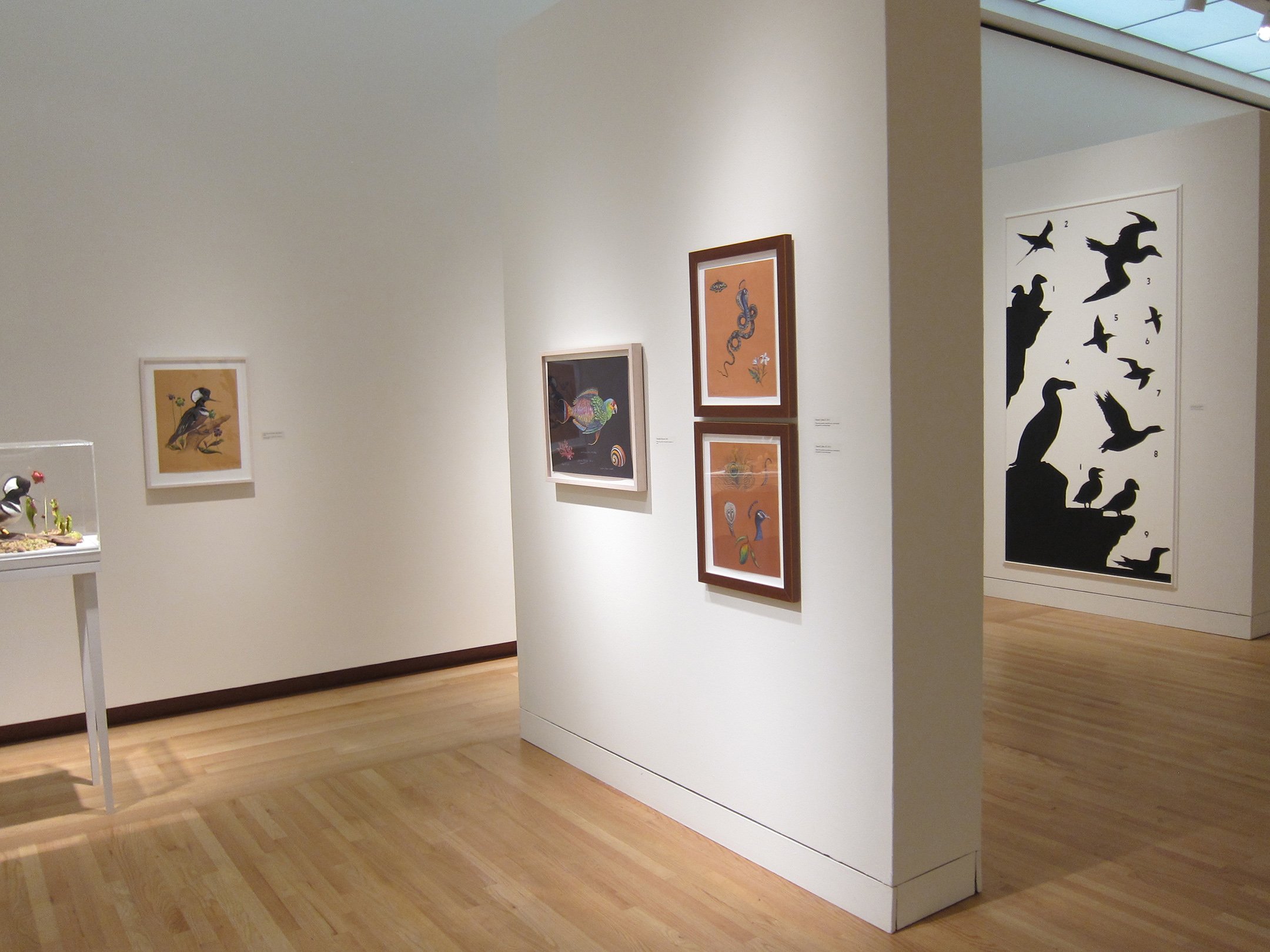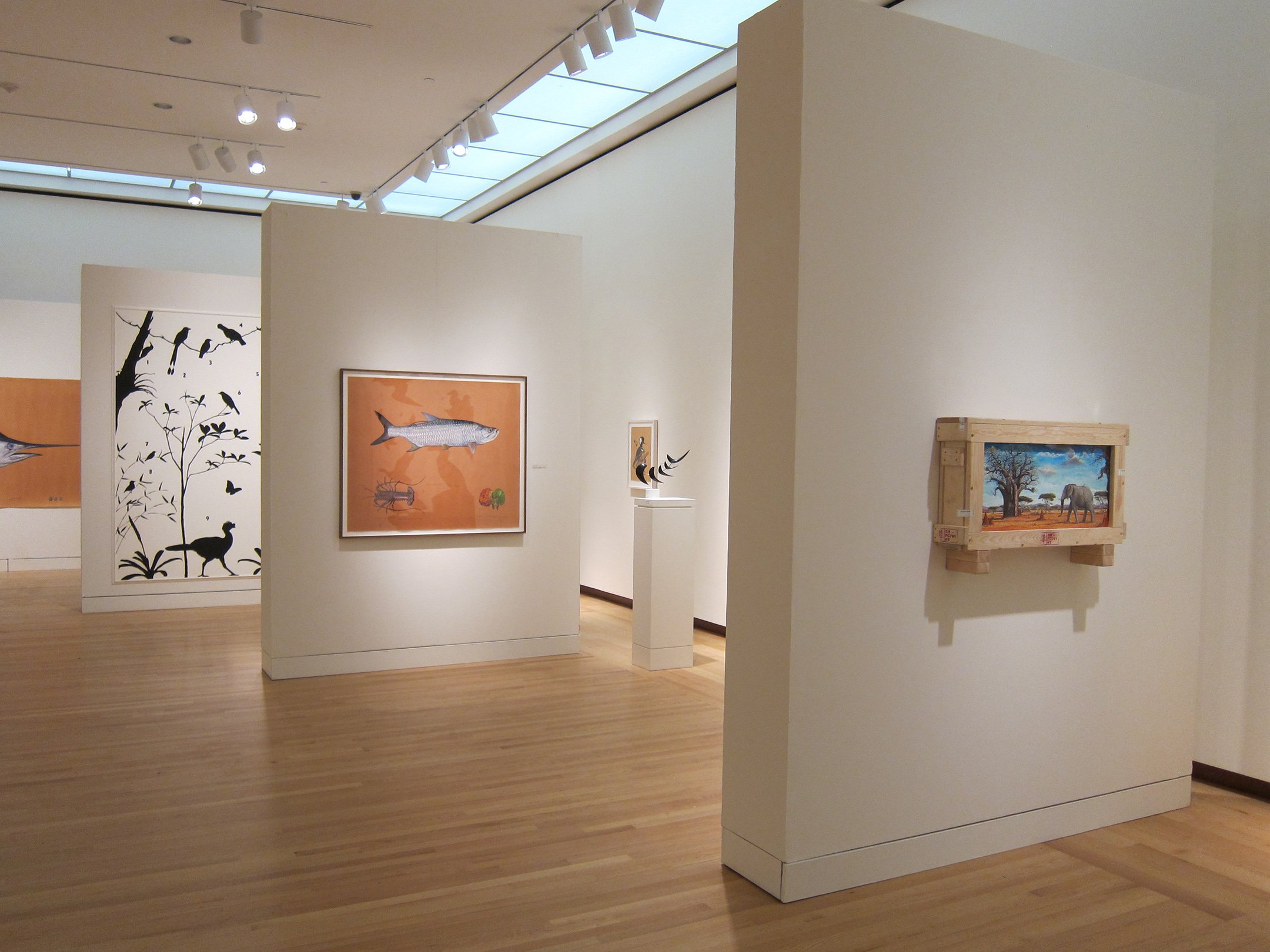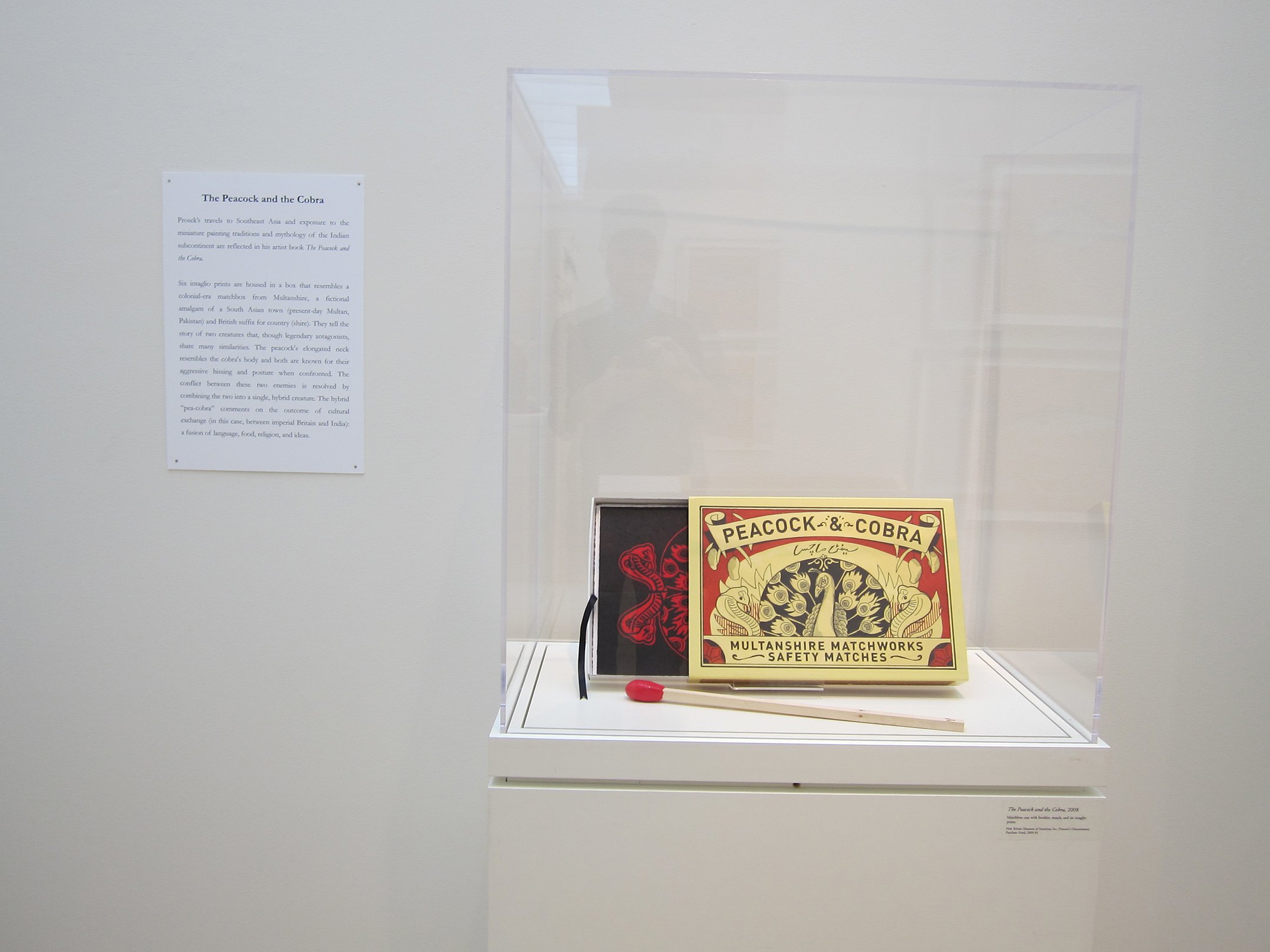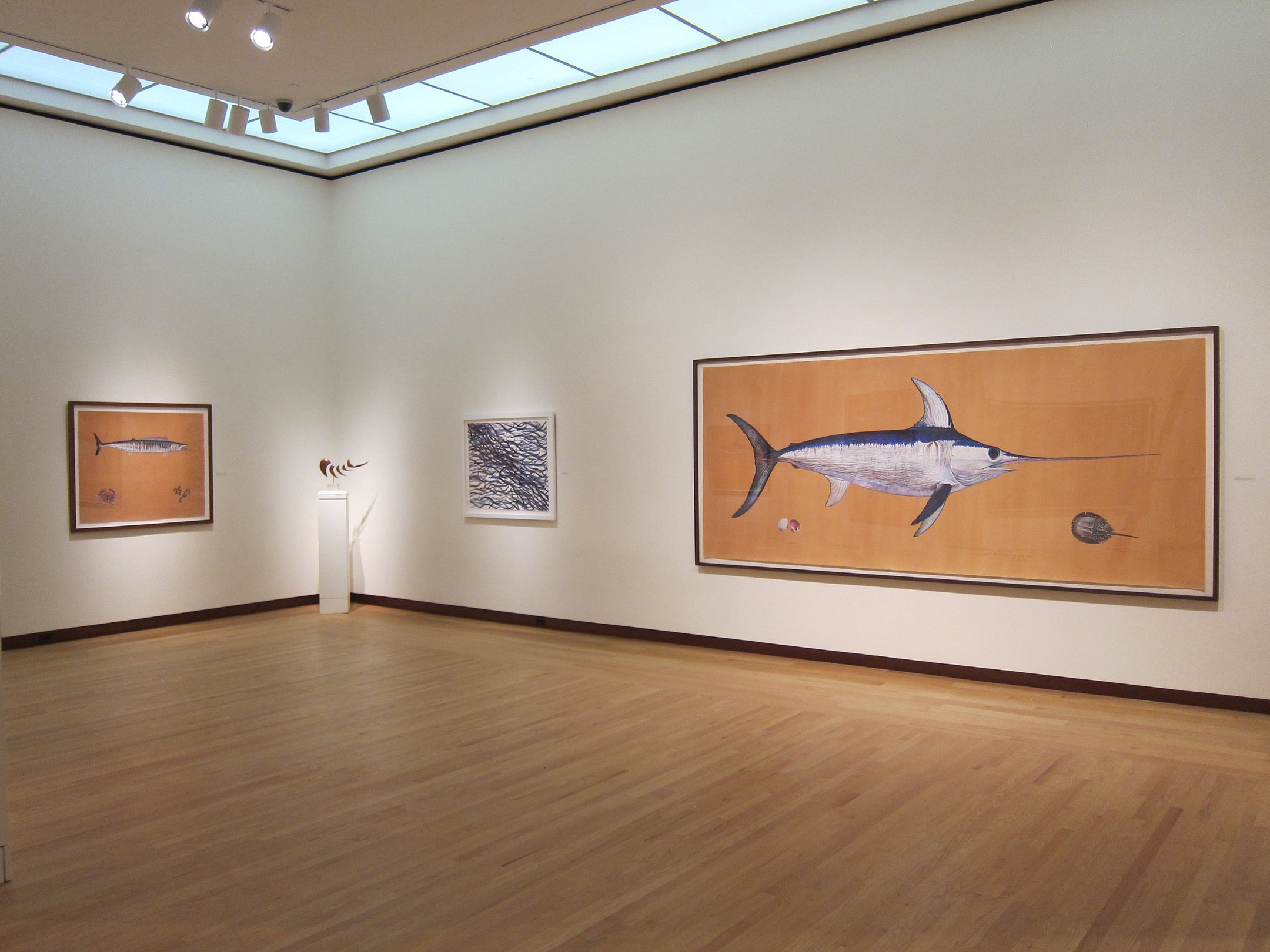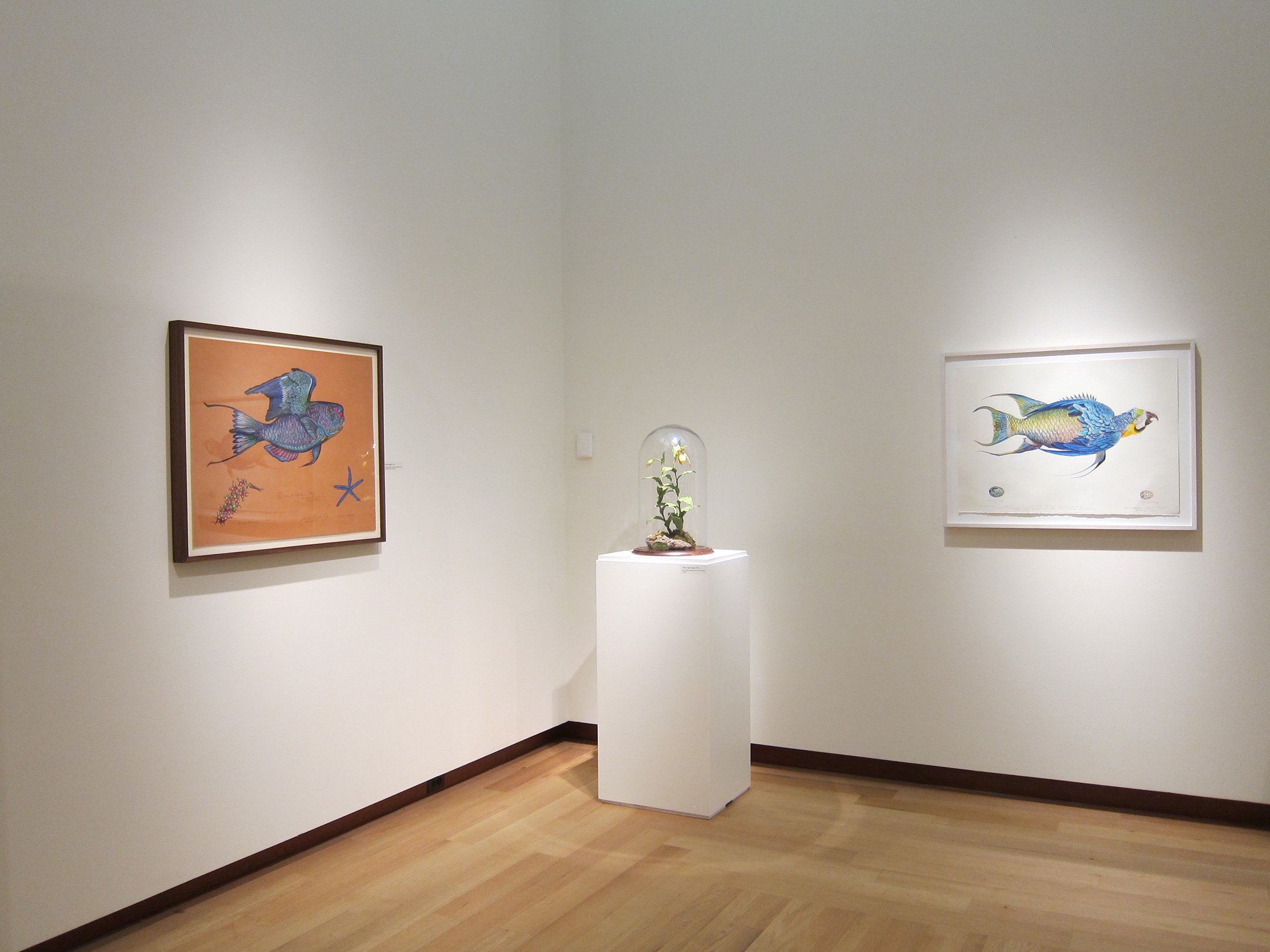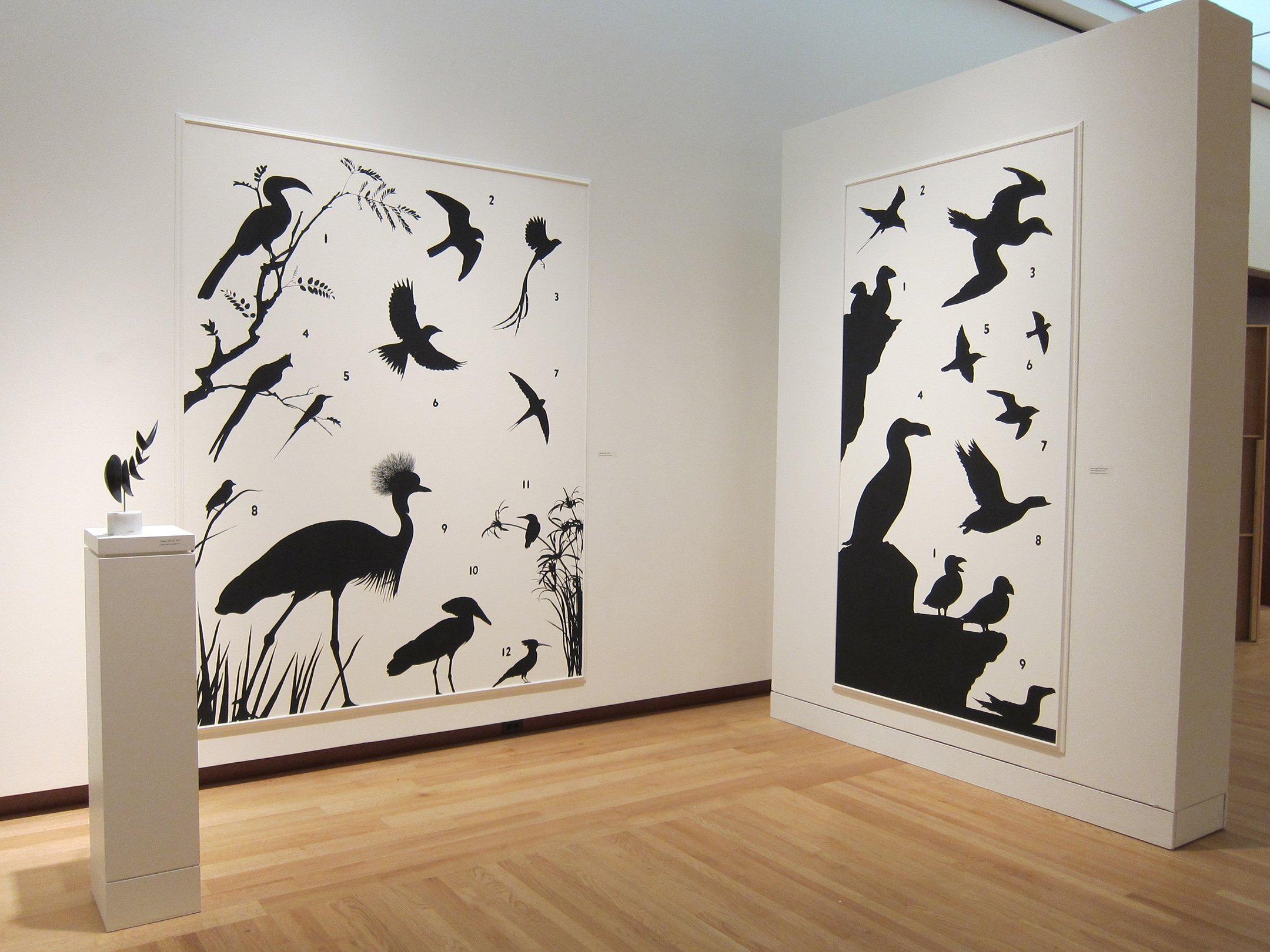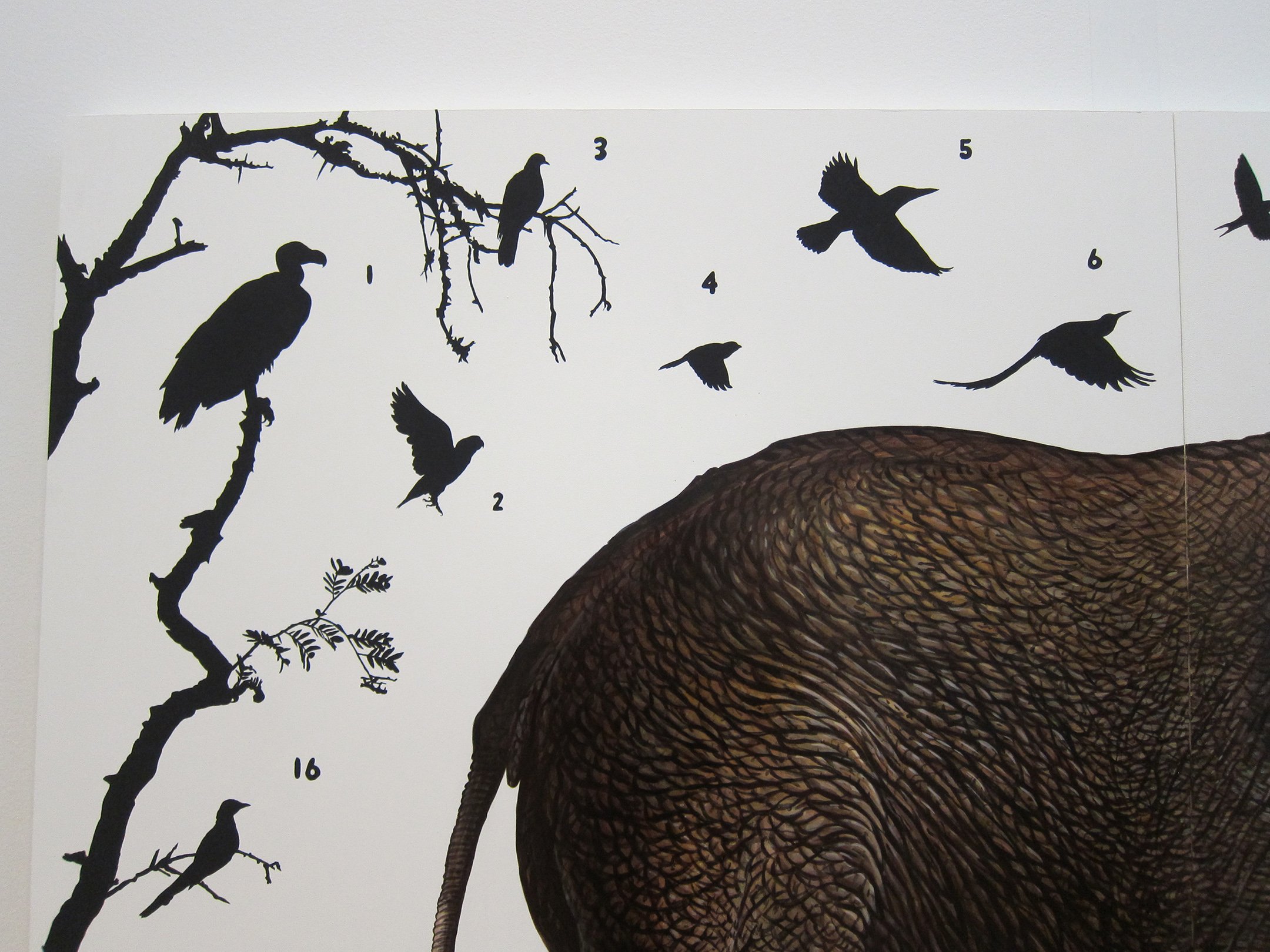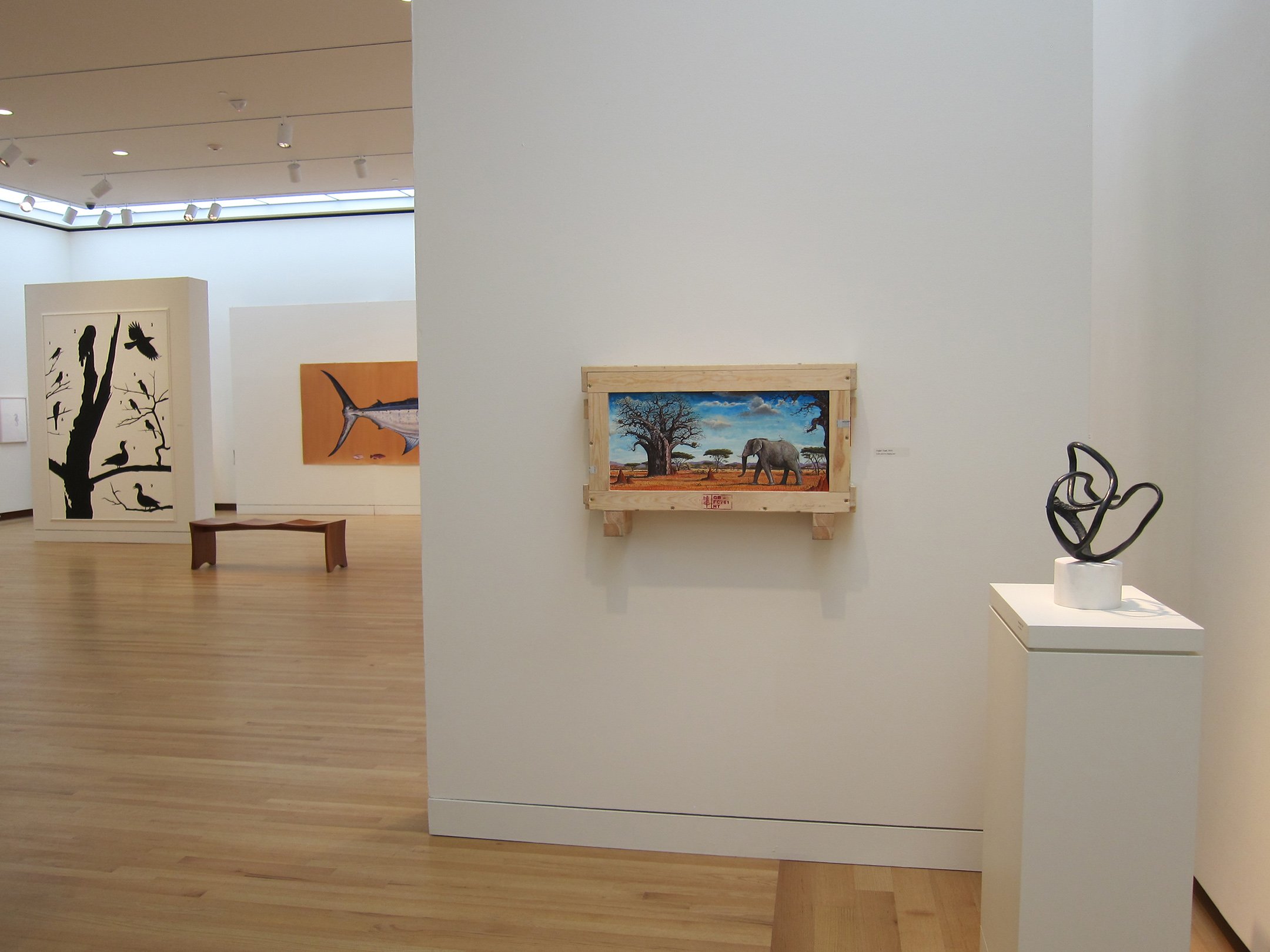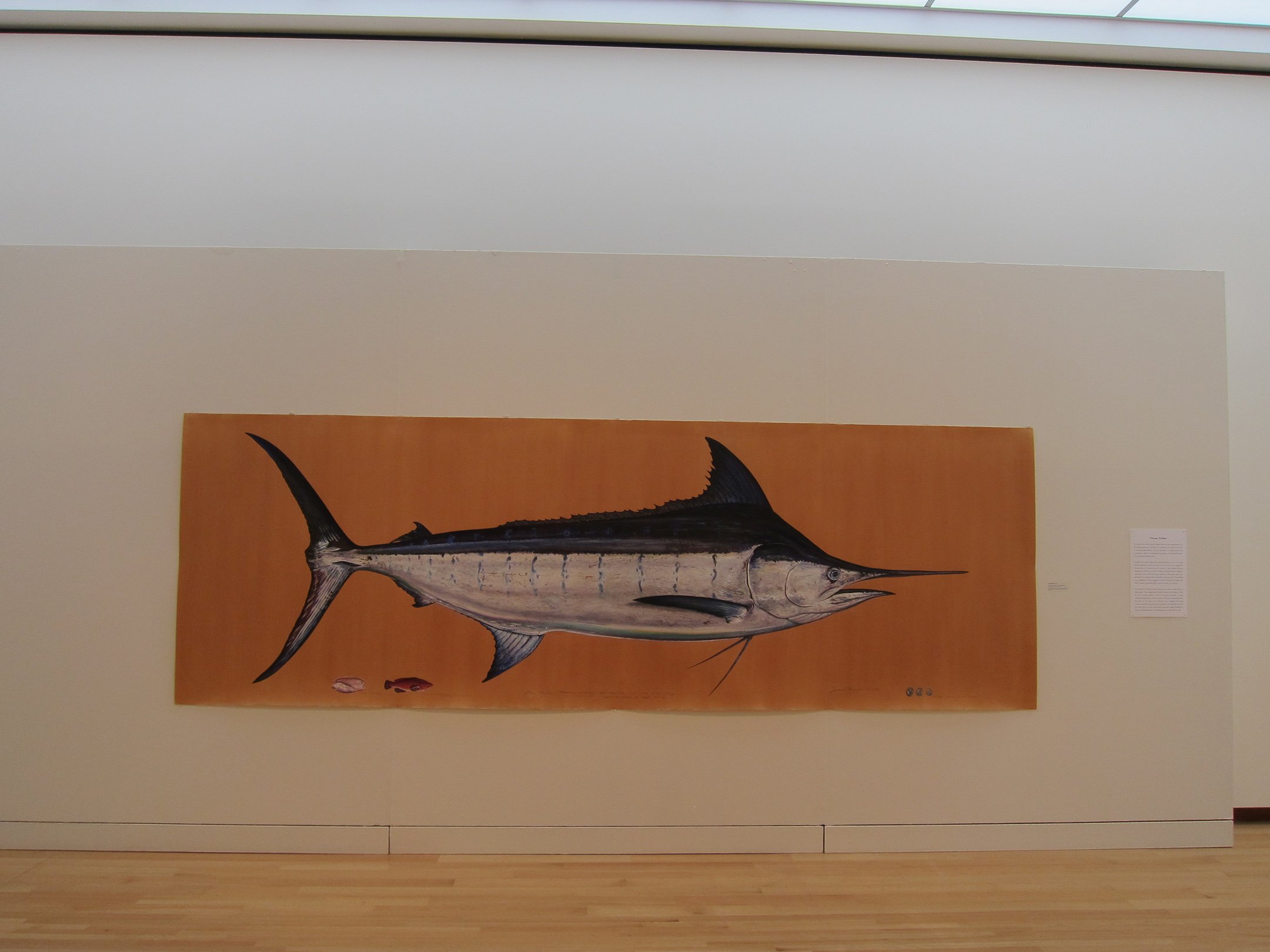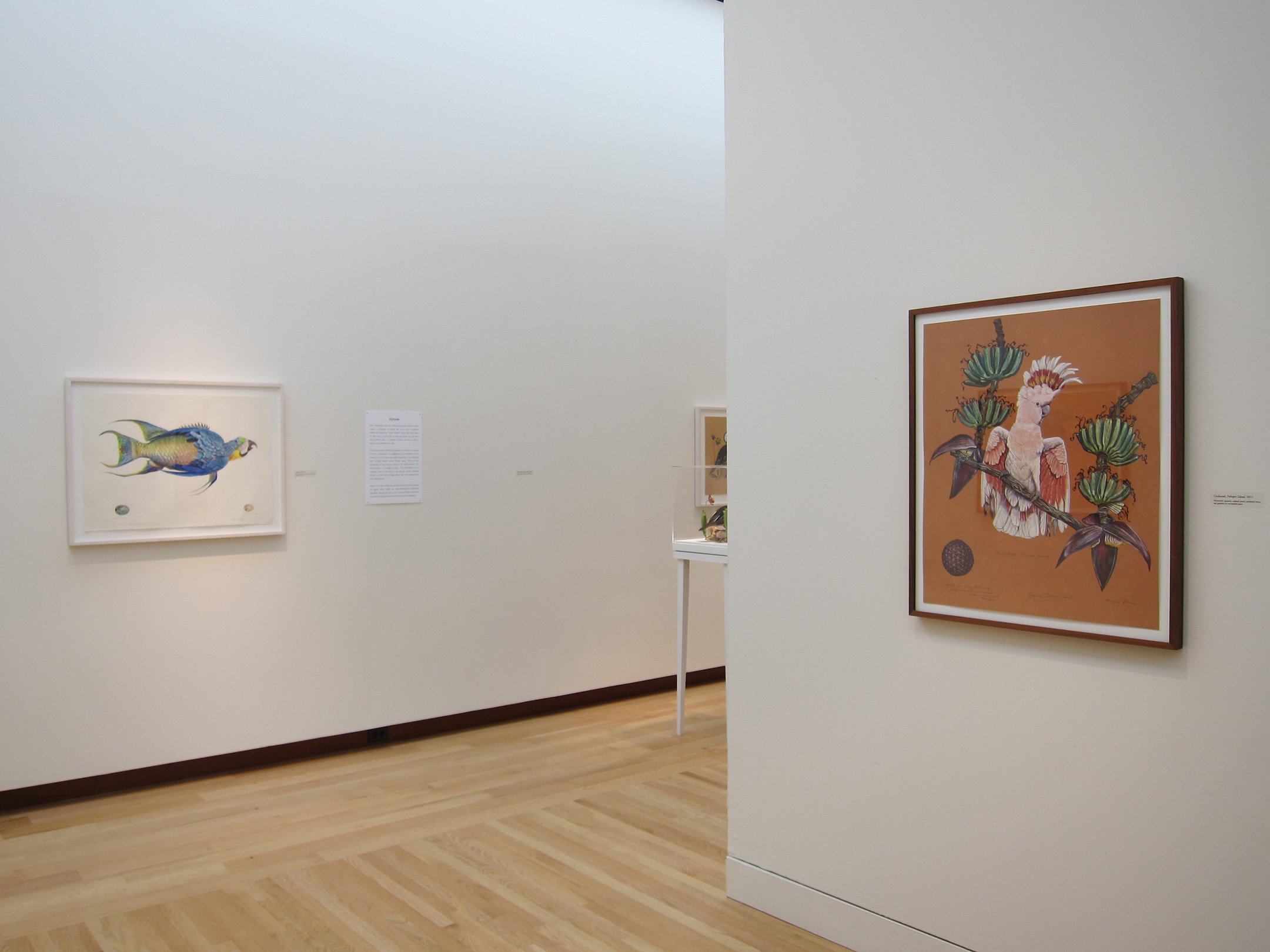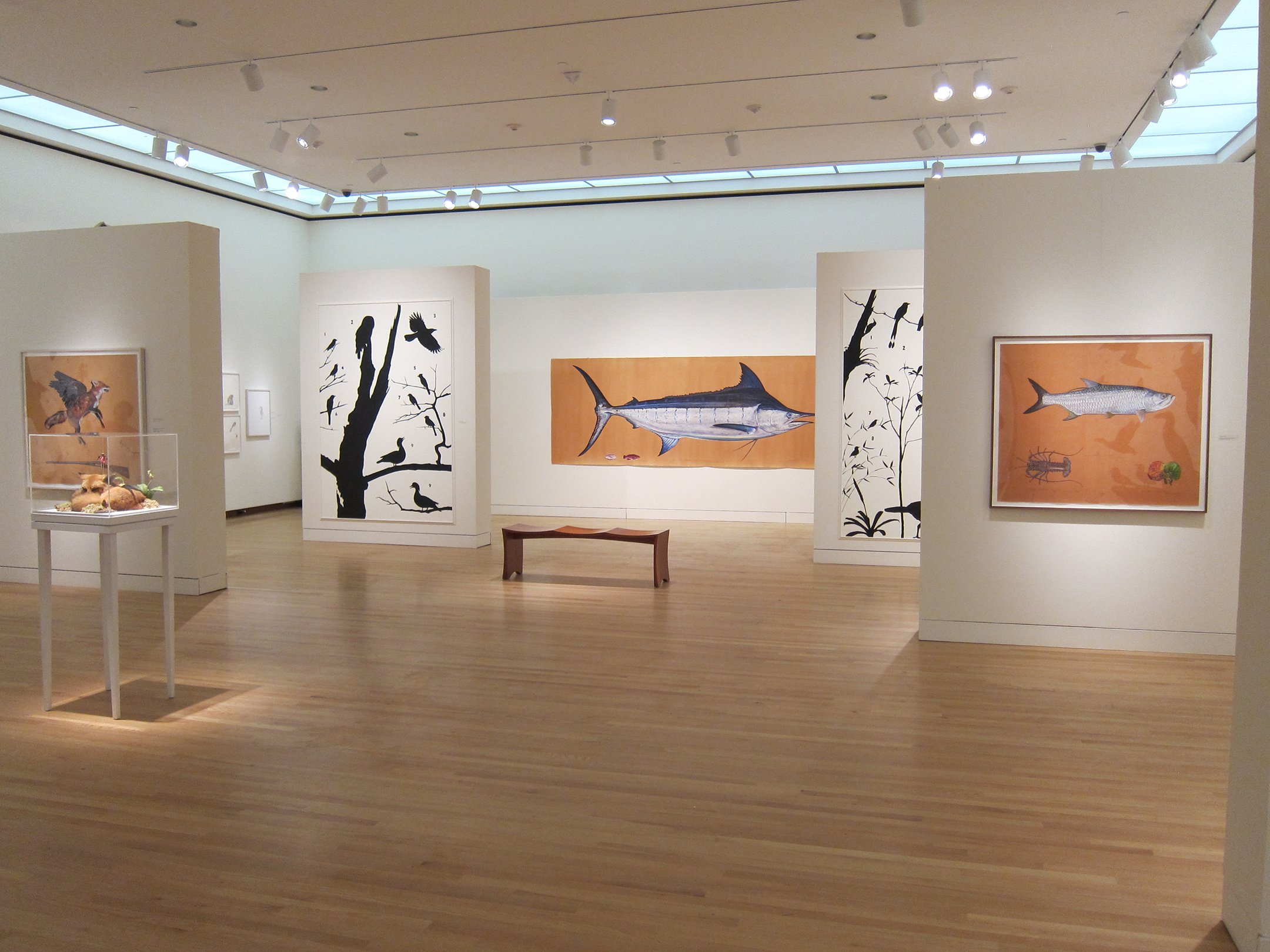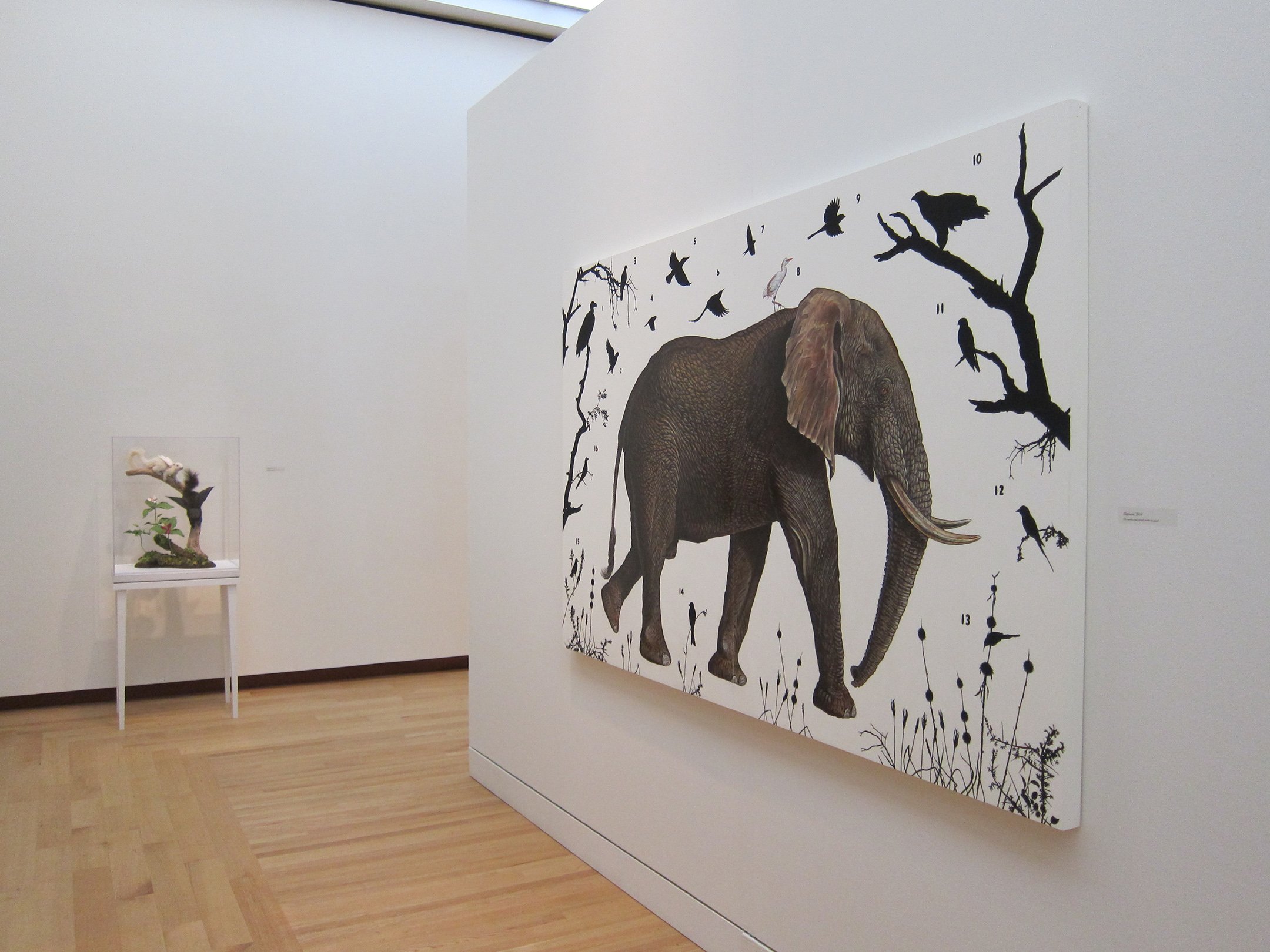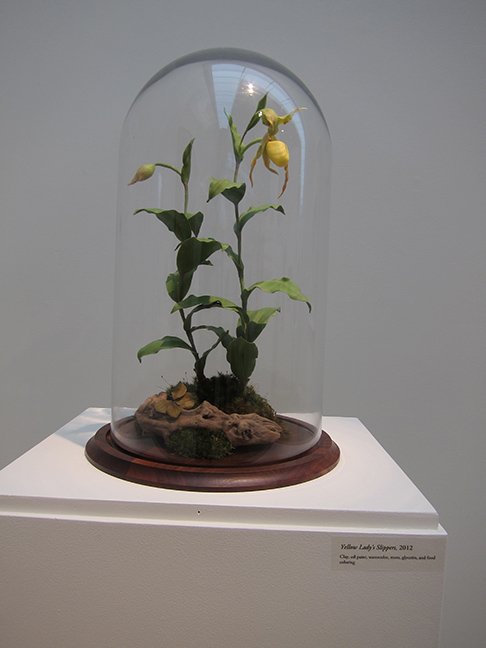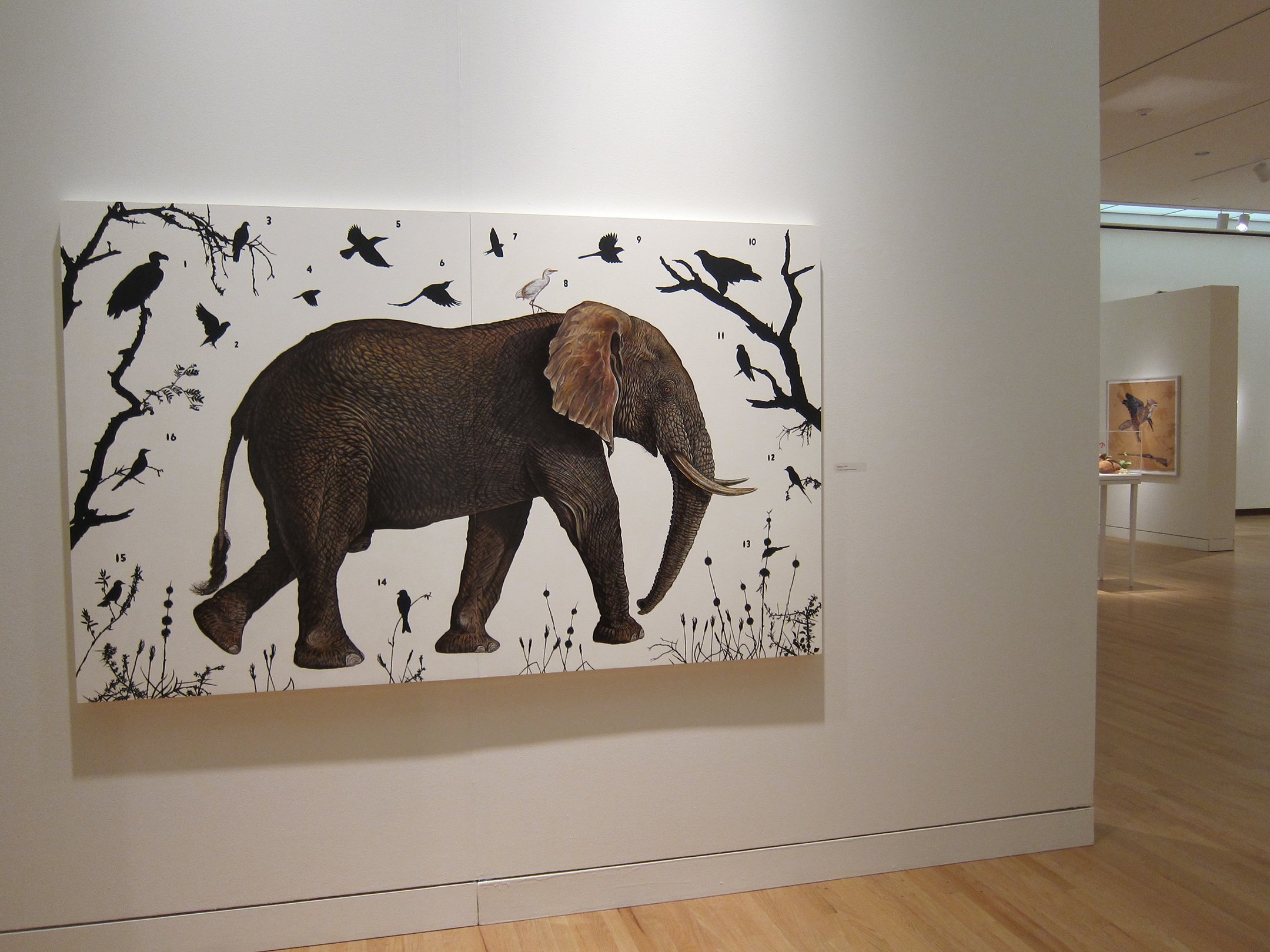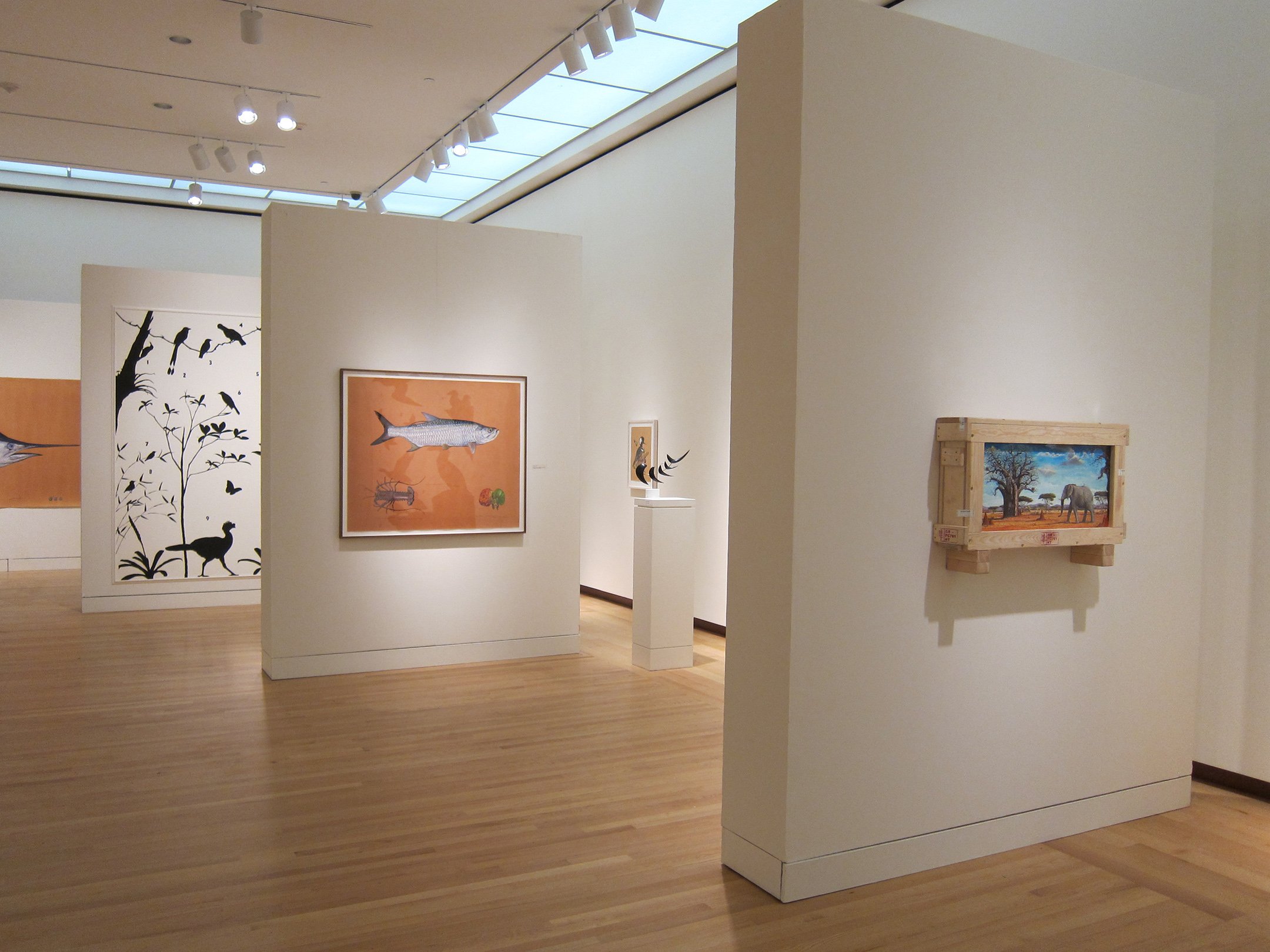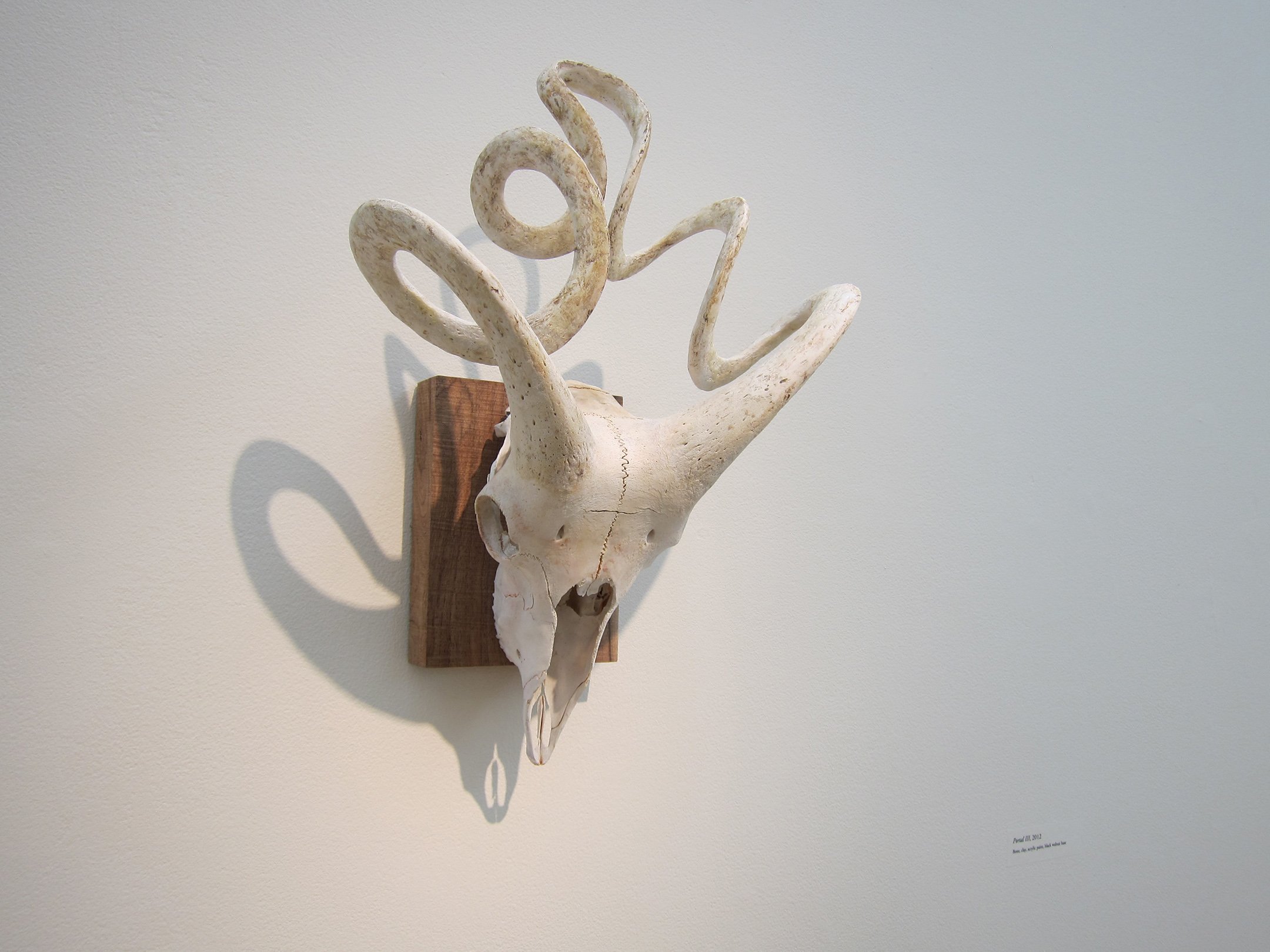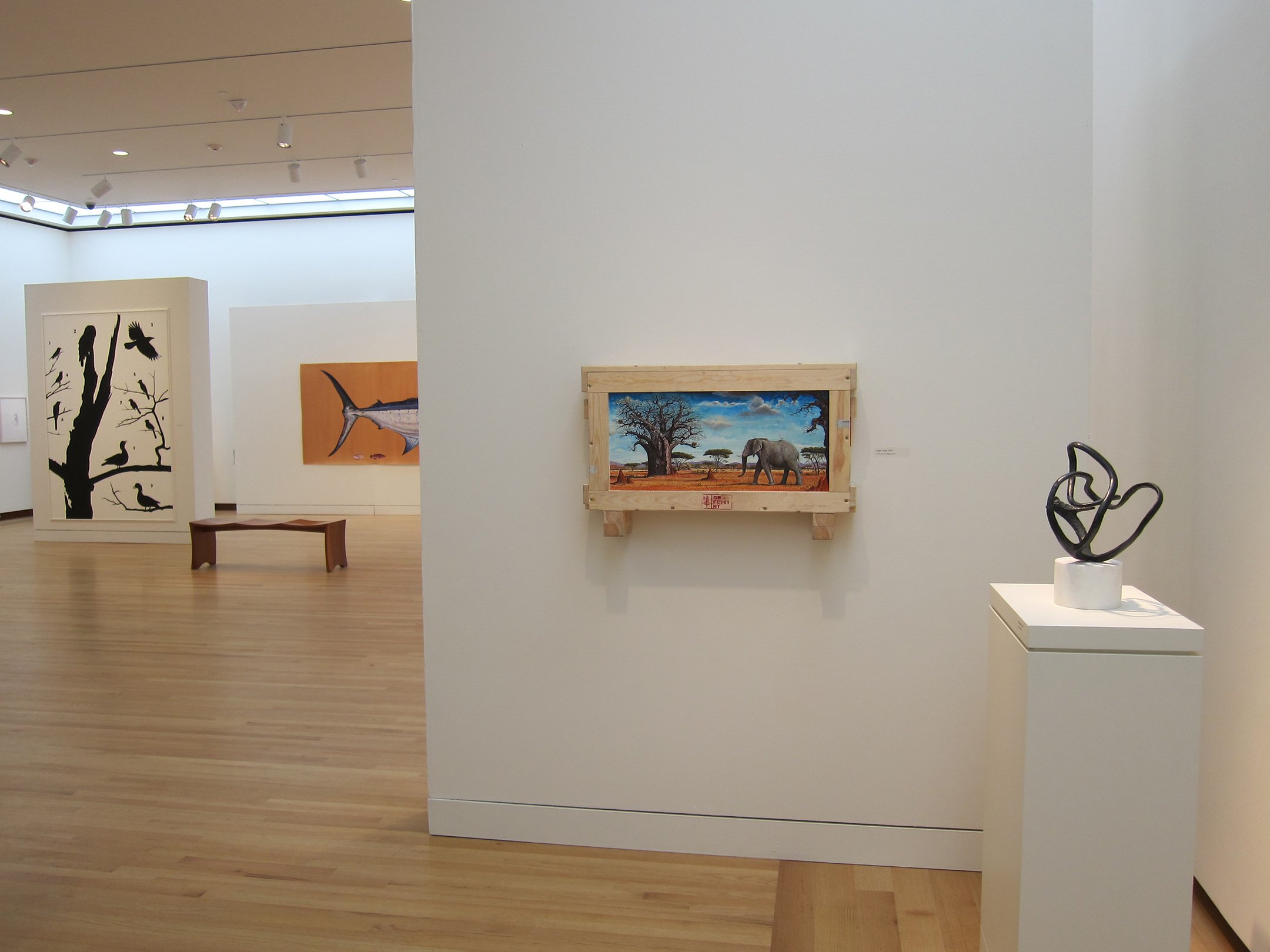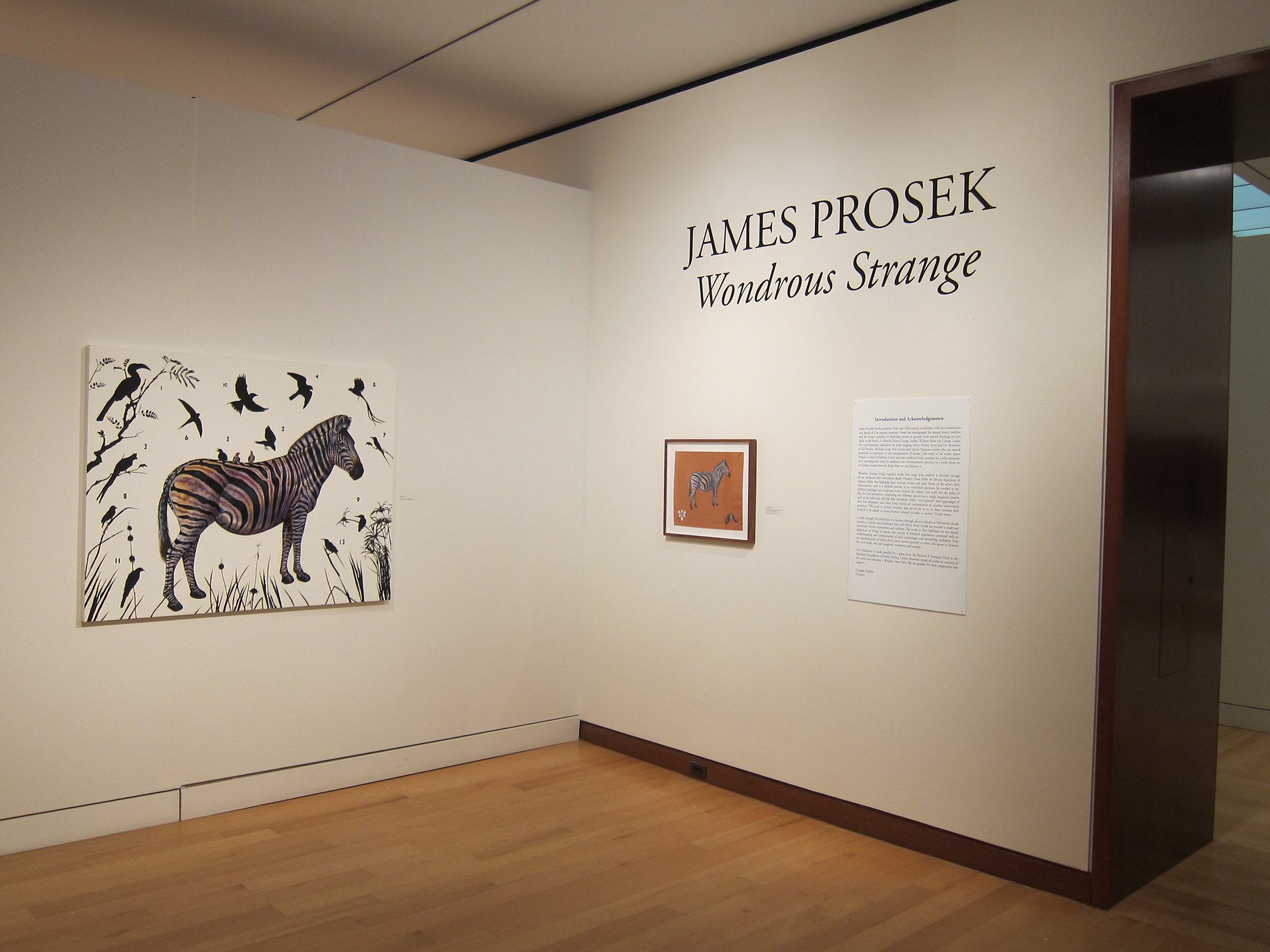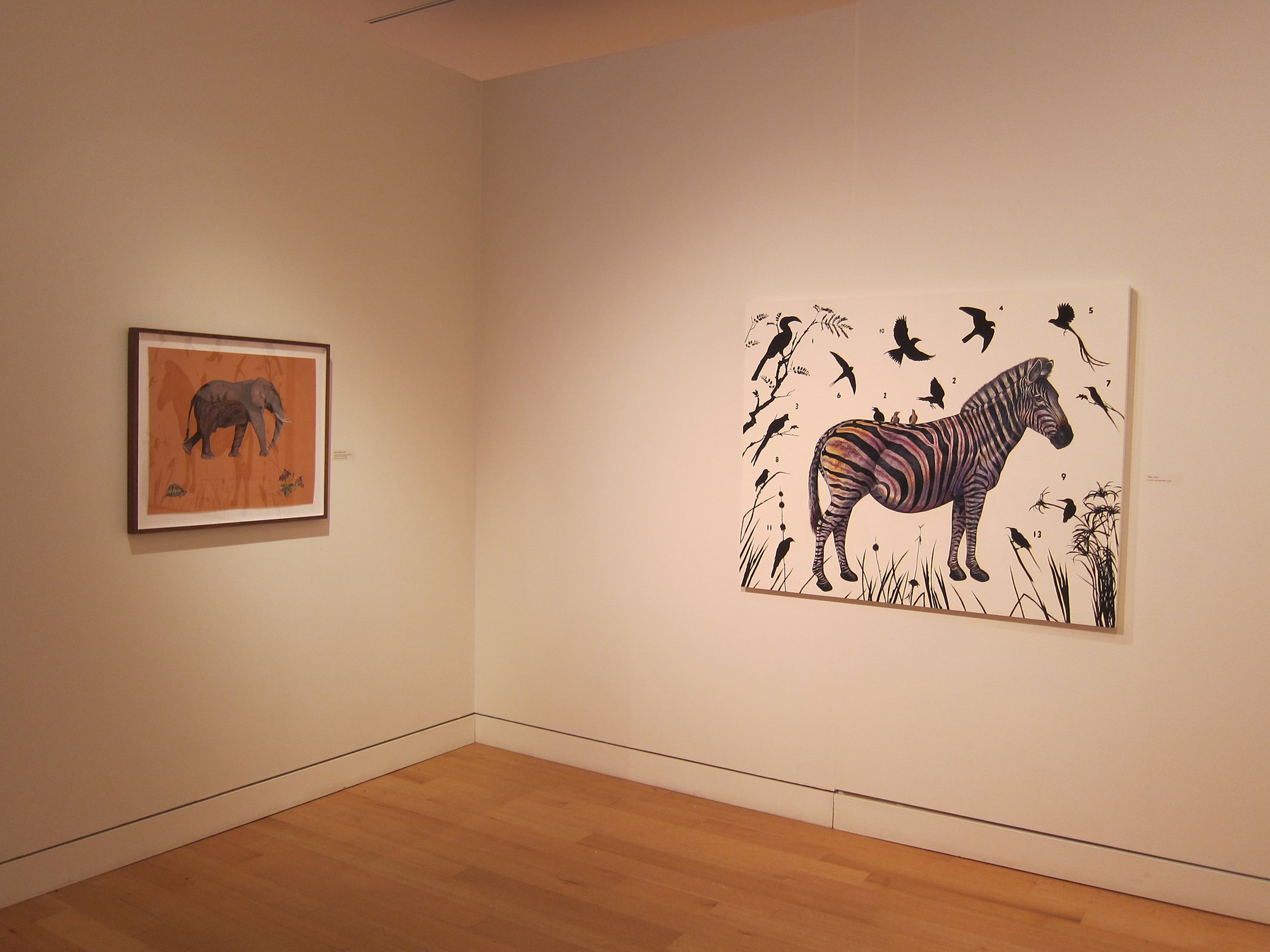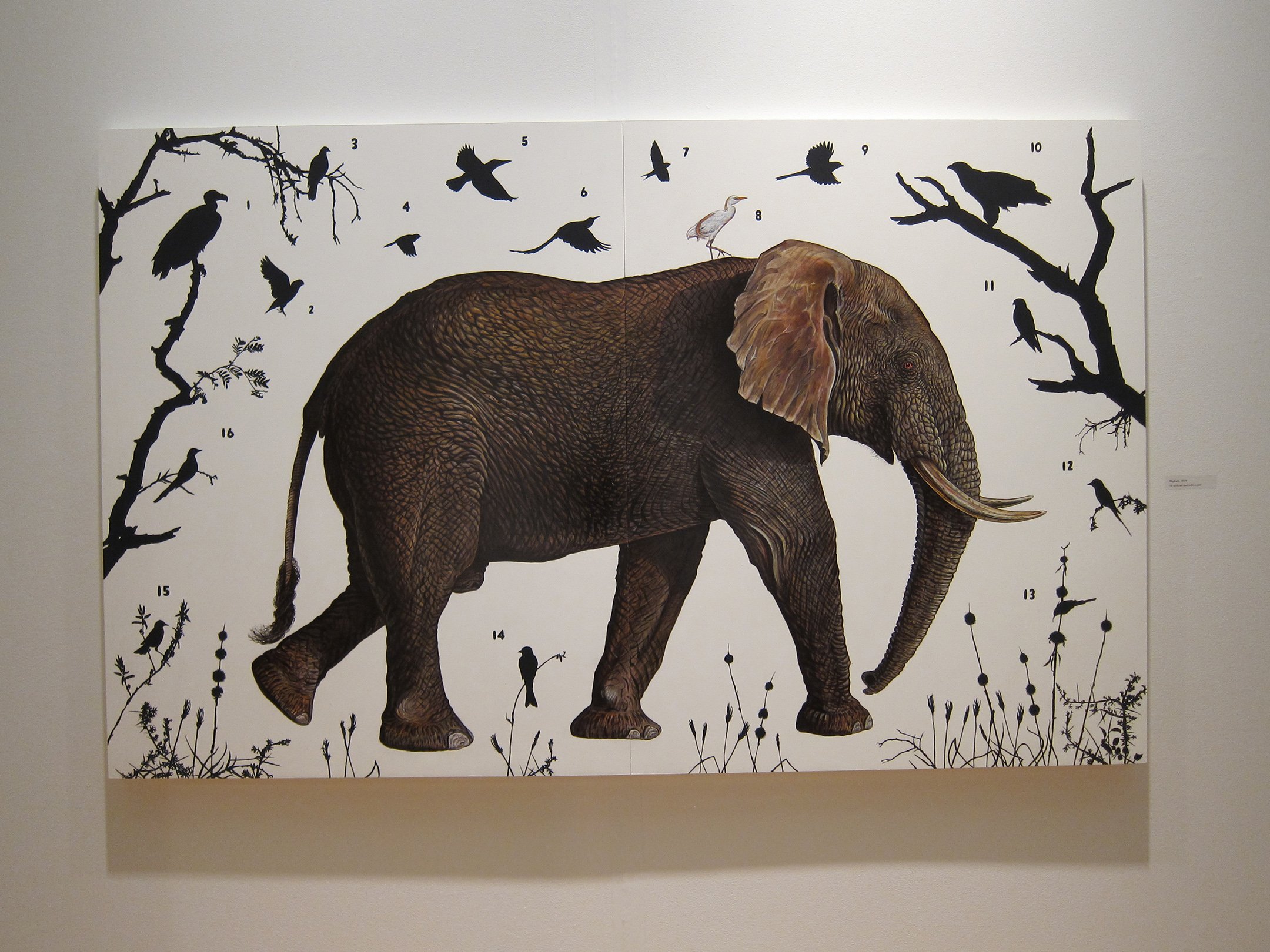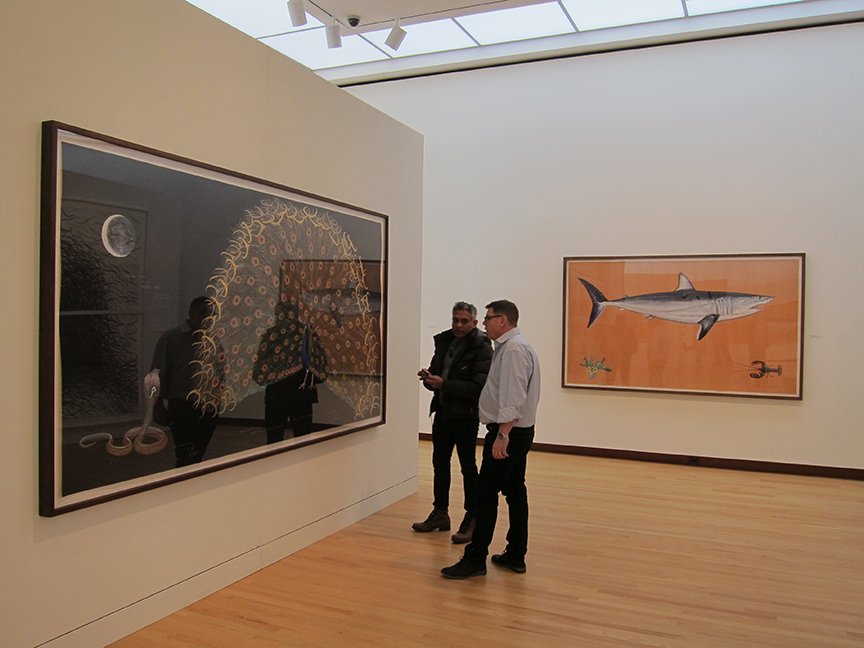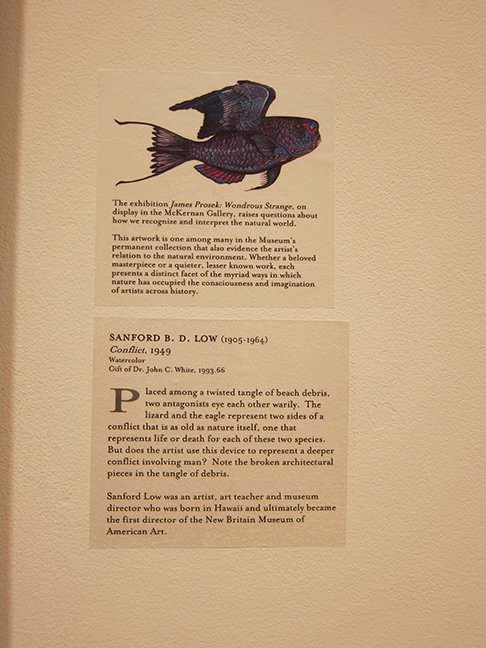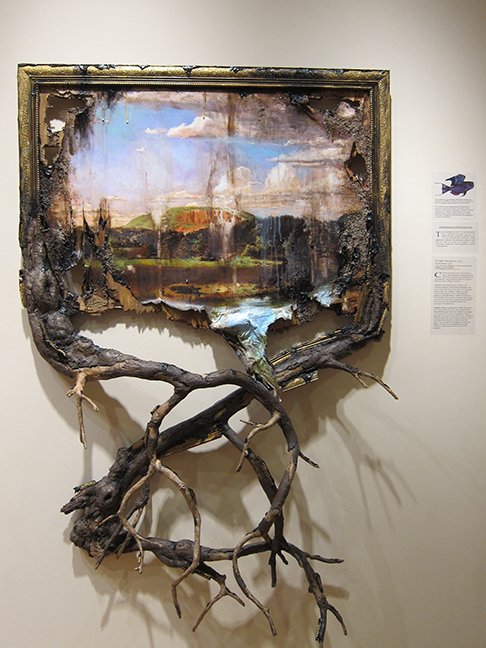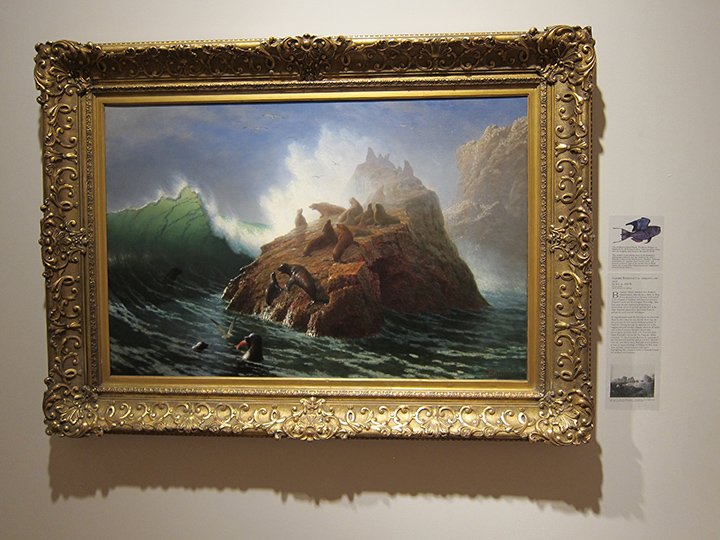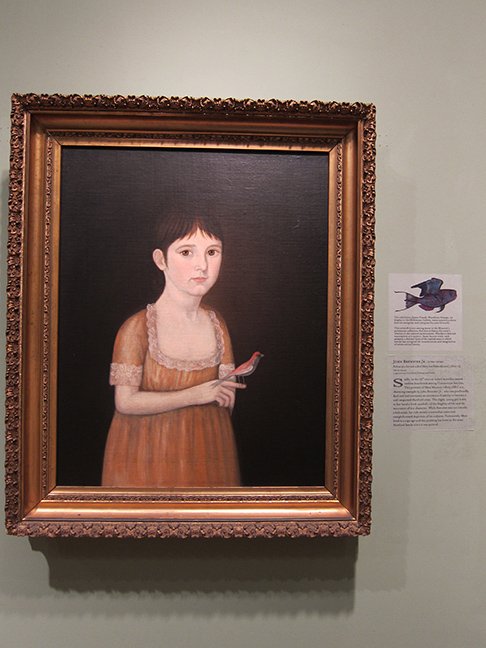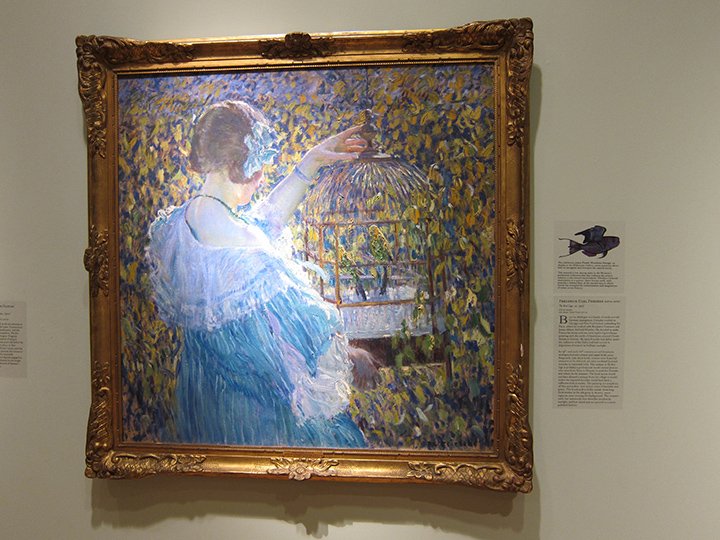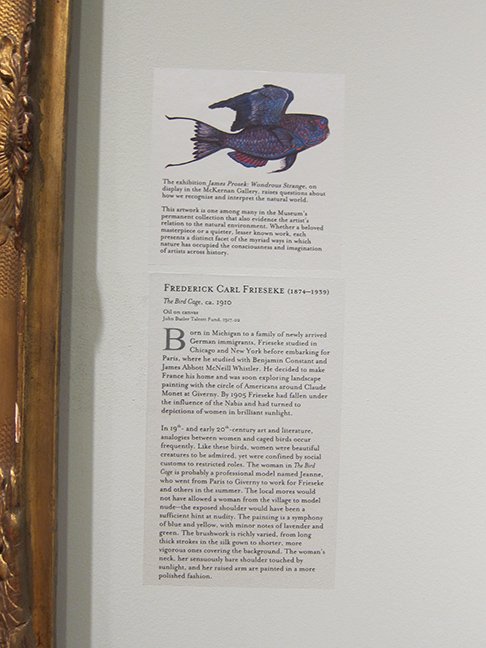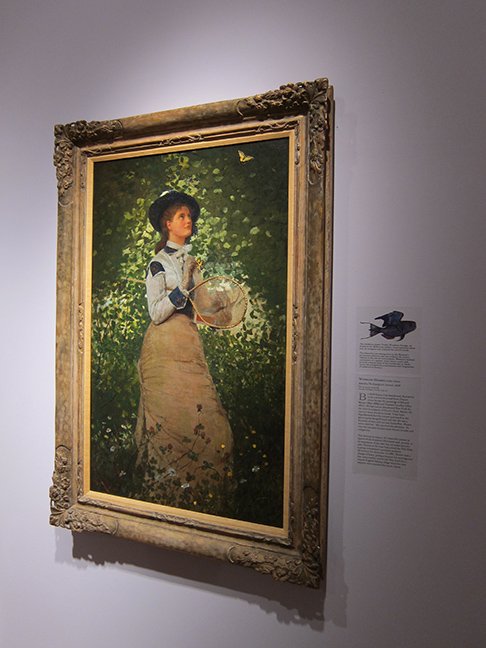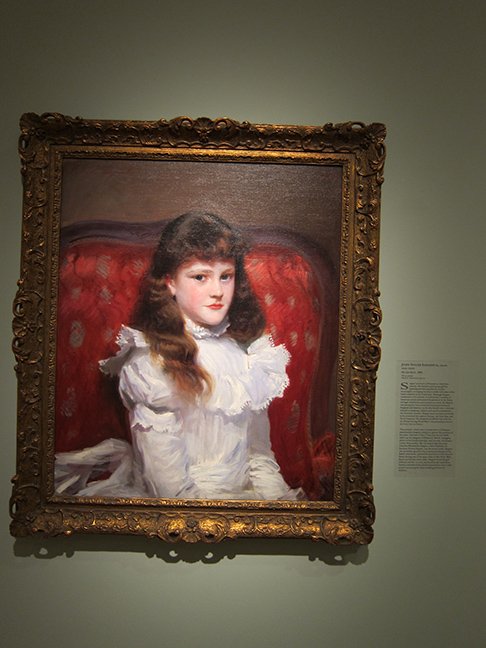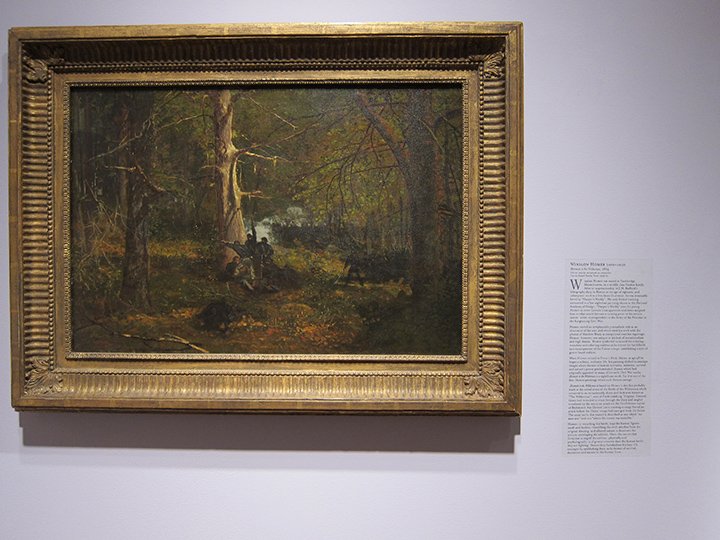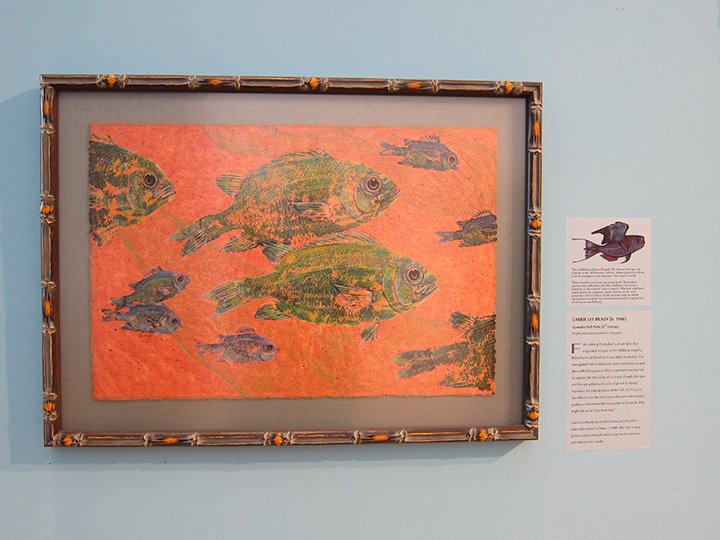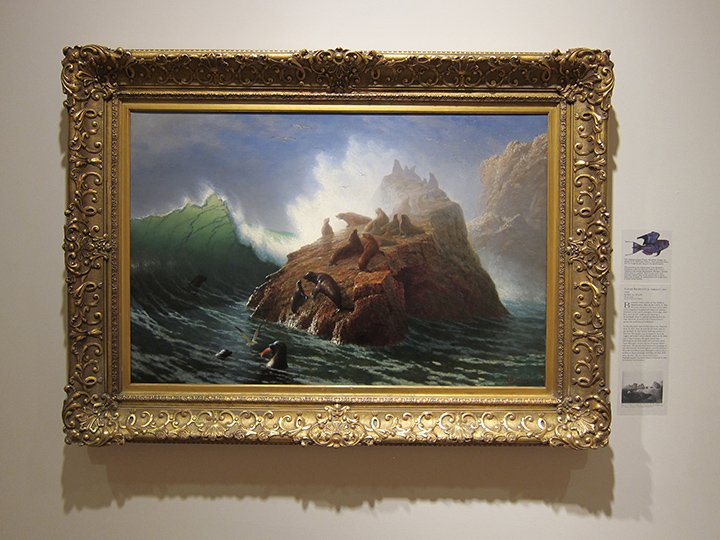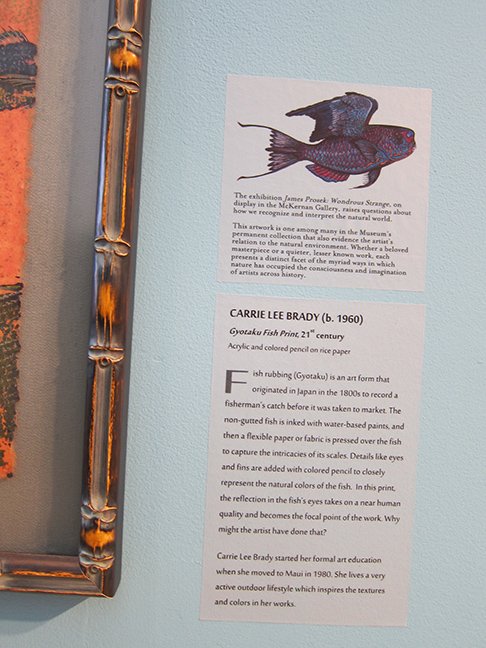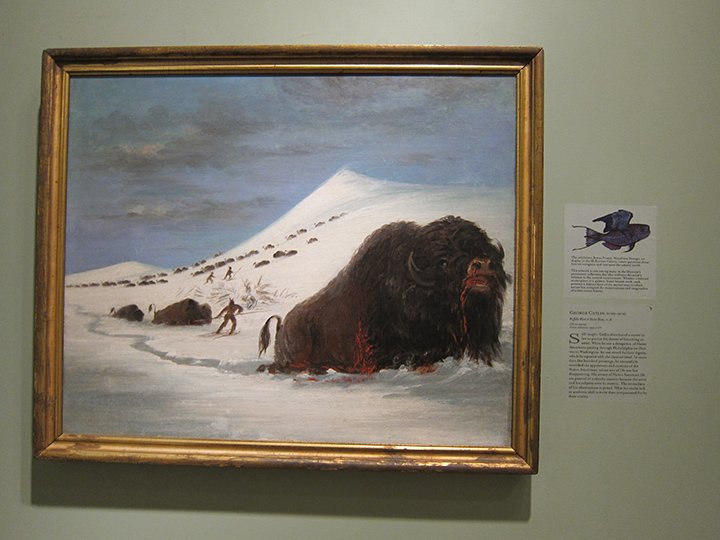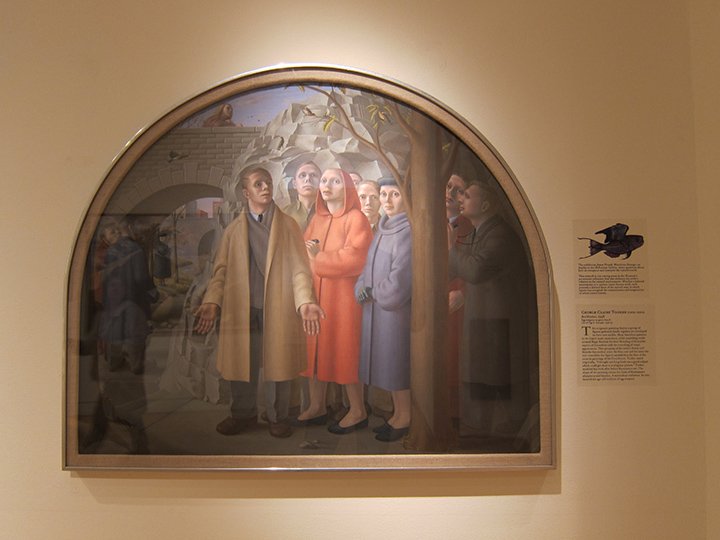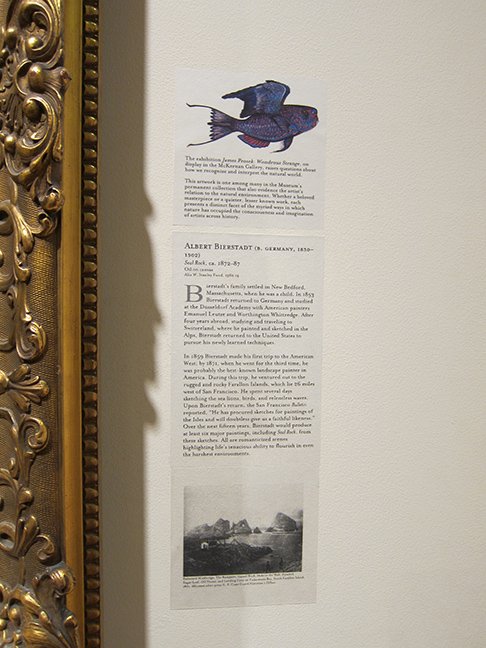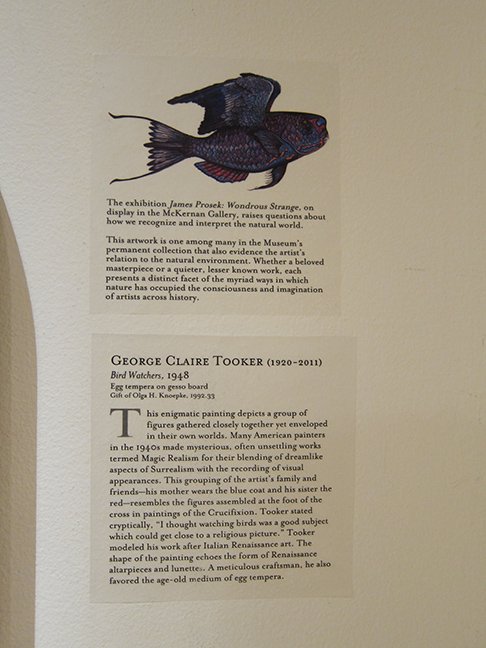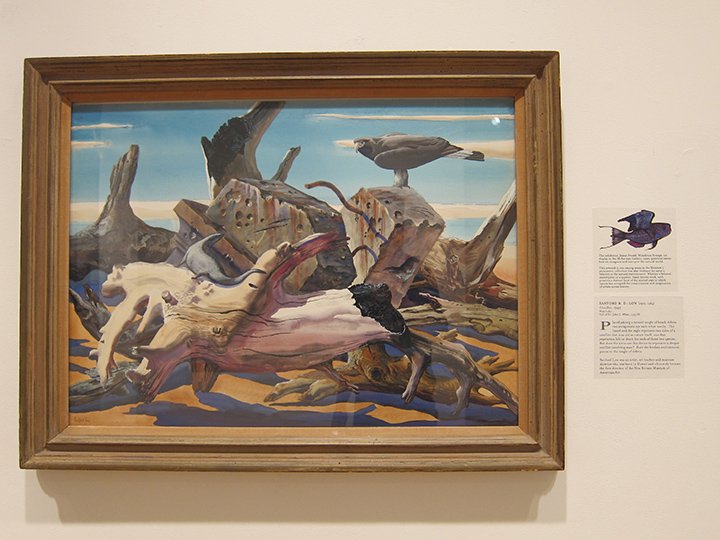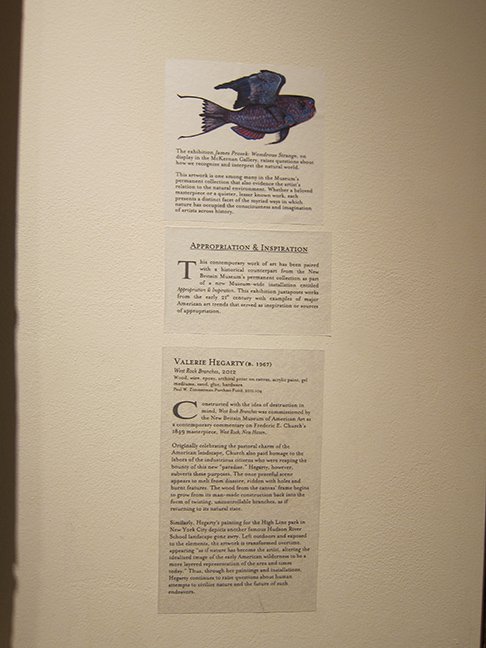Wondrous Strange
James Prosek’s paintings combine 18th- and 19th-century sensibilities with the inventiveness and drama of 21st-century creativity. Prosek has reinvigorated the natural history tradition and the longer tradition of depicting nature in general: from animal drawings on cave walls to the works of Albrecht Dürer, George Stubbs, William Blake and George Catlin. His contemporary influences are wide ranging—from Milton Avery and Lee Bontecou to Ed Ruscha, Richard Long, Neil Jenney and Martin Puryear—artists who use natural materials and/or comment on our manipulation of nature. Like many of his works of art, James Prosek is a kind of hybrid, of here and now combined with nostalgia for a wild yesteryear. As a contemporary artist he addresses our environmental concerns in a world where we are losing natural diversity faster than we can discover it. Yet he also mines the changing relationship that modern humans have had with nature in the relatively brief time since we walked out of Africa and spread across the globe. This unusual amalgam of qualities and characteristics makes him a true original, all the more because he is largely self-taught as an artist.
Like Charles Darwin, whose scientific conclusions were based on his five-year voyage of discovery on the HMS Beagle (1831–1836), Prosek’s works are a result of rigorous travel, observation and analysis of fauna and flora on a global scale. In his experimentation with materials alone, along with his voluminous journals and notebooks, he is scientific and almost obsessive in his urge to record the fleeting beauty of personal experience. Like Audubon who painted his birds life size for his elephant folio (studies are 39 x 26 inches), Prosek often paints nature at real scale highlighting its abstract beauty and monumentality. His unprecedented painting Blue Marlin, 2011—a representation of a full-scale, 696-pound specimen caught in the Cape Verde Islands off West Africa—at fifteen feet is his largest work to date, and proudly in the collection of the New Britain Museum of American Art. He participates in the most painstaking study of our natural world with academics who have dedicated their lives to the study of eels or birds, for example, and immerses himself in documenting his subjects with exactitude and profound attention to the unique characteristics of individual organisms.
While Prosek, as an observer, is a worthy successor to Carl Linnaeus (1707–1778), fondly dubbed the “Prince of Botanists,” he is well aware of the horrors facing our world due to climate change and the effects of toxic waste, just two among many catastrophic challenges we read about daily. An entire series of Prosek’s animals portrays mutations, almost too shocking to contemplate let alone confront visually—though somehow oddly and scarily believable.
These mongrels are not necessarily a consequence of our physical pollution of nature, but of our urge to control and dominate nature, to order and make sense of it, through the use of language and classification systems. Flying Squirrels, half-mammal, half-bird, is an example of a creature which, in Prosek’s words, “became its name in protest of humans trying to control nature through naming.”
Most recently, Prosek spent several months in Zimbabwe and Tanzania, a trip that resulted in his newest body of work dedicated to Africa. The Museum is excited to be able to debut his Africa series which in scale and technical virtuosity inspires us all to a renewed appreciation of the creatures and landscapes of the African continent that are fast dwindling—making beautiful works that also confront difficult issues like the illegal international trade of wildlife and animal parts, in particular ivory.
The New Britain Museum of American Art acquired our first Prosek work, an artist’s book (a suite of etchings housed in an oversized matchbox case with essays by Harold Bloom and Ahmad Iftikhar) titled The Peacock and the Cobra in 2009. We then received several watercolors from the Estate of the late philanthropist Richard P. Garmany. The fund he established at the Hartford Foundation for Public Giving has provided a generous grant to purchase Blue Marlin and to mount the exhibition James Prosek: Wondrous Strange.
I am grateful to David Polk, Advisor to the Richard P. Garmany Fund, for first introducing me to James Prosek in 2008 and for encouraging the Museum to purchase The Peacock and the Cobra artist’s book through the Director’s Discretionary Purchase Fund. Over the last five years, Prosek has enjoyed a period of florescence, with exhibitions at major museums throughout the country including the Addison Gallery of American Art, Andover, MA; the Virginia Museum of Fine Arts in Richmond and the Philadelphia Museum of Art.
I value the artist’s cooperation and cheerful engagement over the last several years leading up to his show here. James’ close friend and gallerist Waqas Wajahat deserves my heartfelt thanks for his insight and enthusiasm throughout the project and for helping curate this exhibition. Naturally, I also wish to laud our dedicated staff for their combined efforts, especially Tom Bell, Melanie Carr, Keith Gervase, Linda Mare, Kathryn Matsuzaki, Melissa Nardiello, Anna Rogulina, Mike Smith, Claudia Thesing, John Urgo, and Heather Whitehouse.
Douglas K.S. Hyland Director
February 22–June 8, 2014
New Britain Museum of American Art
New Britain, CT

